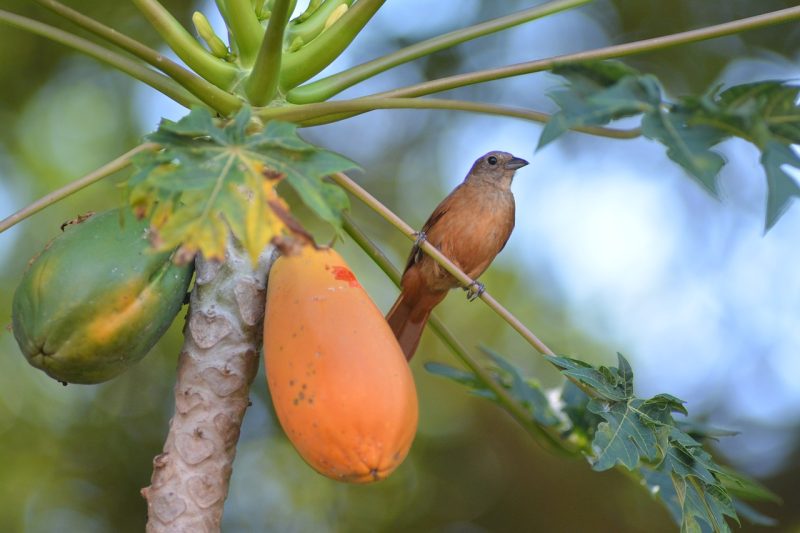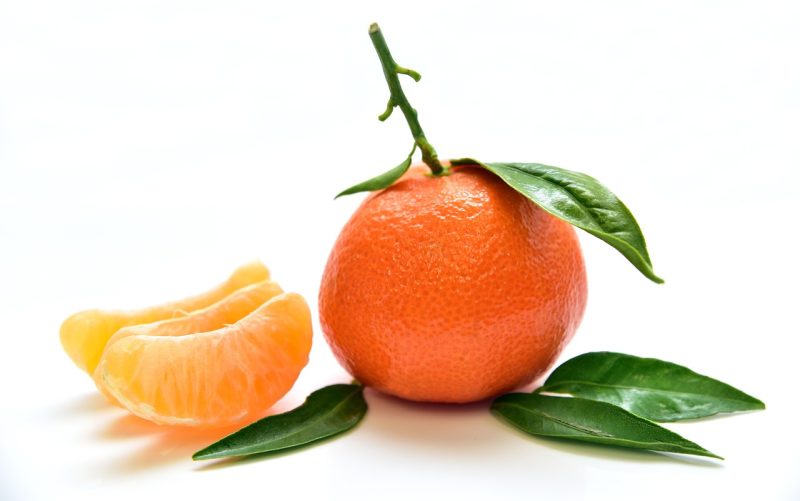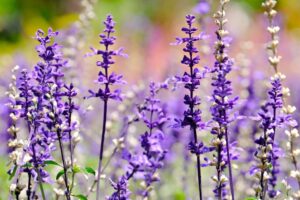As November ushers in cooler temperatures and occasional rainfall in Florida, it becomes an opportune time for gardening enthusiasts to plan their fall and winter vegetable gardens. The combination of mild weather and fertile soil makes this month ideal for planting a variety of veggies, flowerts, and herbs that will thrive during the milder Florida winter.
Vegetables to Plant in November in Florida
Arugula
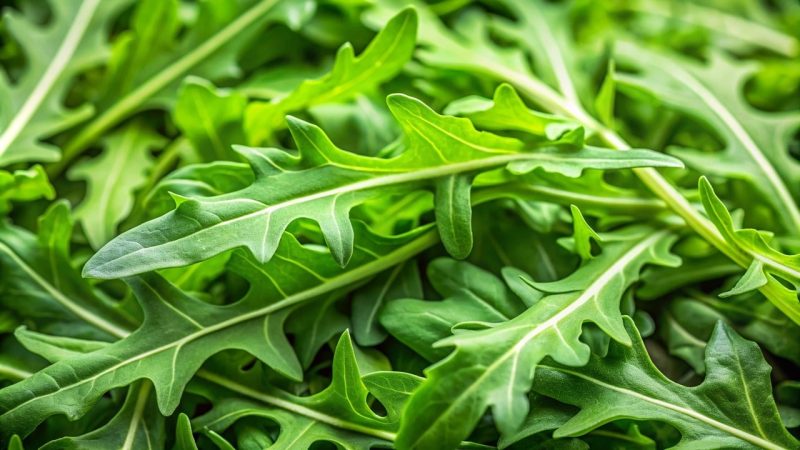
Arugula, also known as rocket or roquette, is a fast-growing leafy green that offers a peppery, nutty flavor to salads, sandwiches, and even pizzas. Planting arugula in November is a great option for Florida gardeners, as this cool-weather crop can thrive in the state’s mild climate. For the best results, choose a well-drained soil rich in organic matter. Prior to planting, consider mixing in compost to enhance soil nutrients.
When sowing arugula seeds, you can do so directly into the soil or start them in seed trays if you’d prefer to transplant them later. Seeds should be planted about ¼ inch deep and spaced 2-4 inches apart to allow ample room for growth. Keep the soil consistently moist, but avoid waterlogging, as arugula is sensitive to overly saturated conditions.
Here’s a tip: As arugula matures in around 30 to 40 days, consider staggered planting every couple of weeks to ensure a continuous harvest throughout the season. Not only is arugula rich in vitamins A and K, but it also provides a healthy dose of antioxidants, making it a nutritious addition to any meal.
Beets
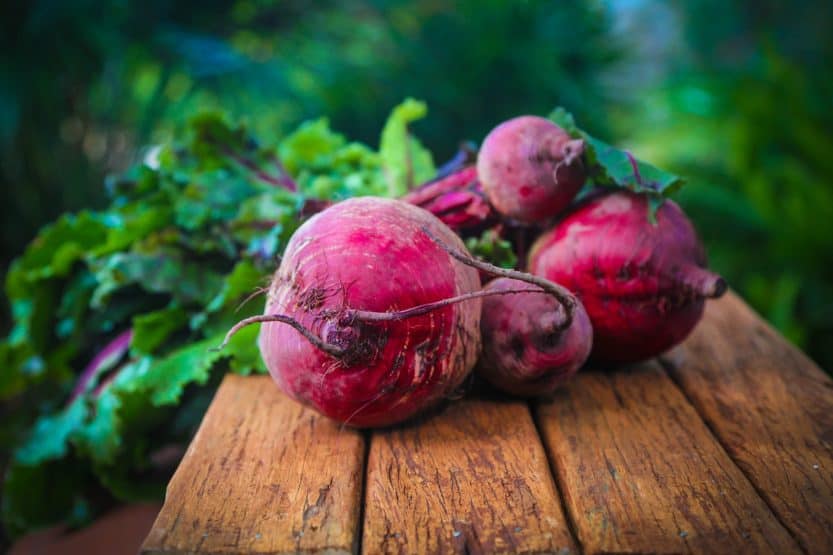
Beets are a versatile root vegetable that can be enjoyed roasted, pickled, or even raw in salads. November is an excellent time to plant beets in Florida, as they thrive in cooler temperatures and benefit from the slightly cooler soil around this time of year. Before planting, ensure your soil is loose and well-draining—heavy, compacted soil can hinder the growth of these rounded roots.
To plant beets, sow seeds approximately ½ inch deep and 1-2 inches apart, keeping rows about 12-18 inches apart. Be careful not to overcrowd your seeds, as thinning will be necessary once the seedlings sprout. After germination, typically within 7-10 days, thin the seedlings to about 3-4 inches apart to give each beet the space it needs to grow to size.
Beets are not only tasty but also packed with health benefits—rich in fiber, vitamins, and minerals, they promote heart health and improve digestive function. Another wonderful aspect of beets is that their greens are also edible and delicious; you can harvest them in conjunction with the root, allowing for an extended harvest and minimizing waste.
Broccoli
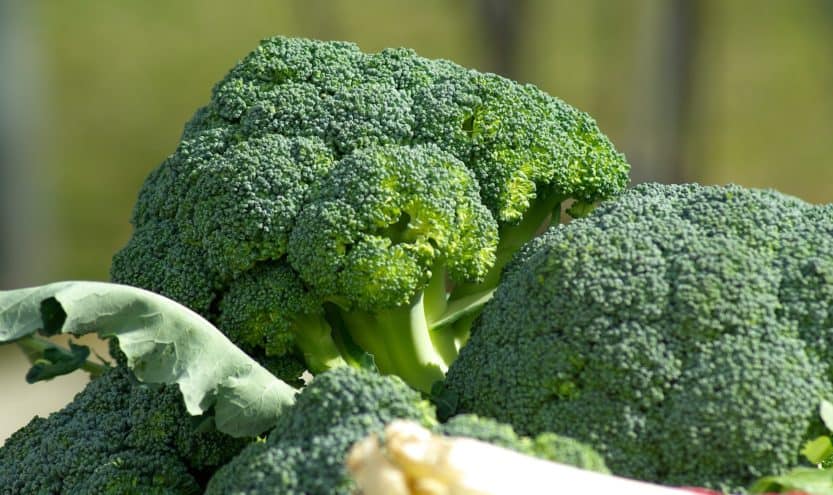
Broccoli is a fantastic addition to any Florida garden, thriving well in the cooler months. When planted in November, broccoli can flourish through the winter months before being harvested in late winter or early spring. This nutritious vegetable requires a bit more attention than the previously mentioned crops but is well worth the effort due to its numerous health benefits and culinary uses.
When preparing to plant broccoli, focus on selecting a sunny location and well-draining soil, enriched with plenty of organic matter. Space seeds approximately 18 inches apart in rows that are at least 24 inches apart. For optimal growth, seeds can be started indoors about 4-6 weeks before the last frost date and then transplanted outdoors when seedlings are about 4-6 inches tall.
Regular watering is crucial as broccoli requires consistent moisture to develop healthy crowns. Pay attention to pest management, as aphids and cabbage worms are common nuisances for broccoli plants. Utilizing organic pest control methods or companion planting with flowers like marigolds can help deter these pests.
Beyond its complex flavor, broccoli is a powerhouse of nutrients, providing high levels of vitamin C, vitamin K, and fiber. Adding freshly harvested broccoli to your meals not only enhances flavors but also boosts your dietary intake of essential nutrients, making it a superb choice for health-conscious gardeners.
Brussels Sprouts

Brussels sprouts are a unique and nutritious vegetable that can add a touch of sophistication to your winter menu. Their developmental journey is intriguing, as each sprout forms along the stem, giving the plant a distinctive appearance. When planted in November, Brussels sprouts grow steadily through the cooler months, ultimately producing a harvest around late winter to early spring.
For optimal growth, planting Brussels sprouts requires rich, well-drained soil with a pH of around 6.0 to 7.0. To improve soil fertility, it’s beneficial to integrate plenty of organic matter, such as compost or well-rotted manure, into your planting area. Seeds should be sown about ½ inch deep and spaced approximately 2 to 3 inches apart in rows that are 24-36 inches apart. When seedlings are 4-6 inches tall, thinning them to 12-24 inches apart will provide necessary airflow and room for growth.
Brussels sprouts thrive in cooler temperatures; however, they need consistent moisture to avoid bolting. Keep the soil evenly moist, as fluctuations can stress the plants. Furthermore, consider using mulch around the base to help retain soil moisture and suppress weeds. Packed with vitamins C and K, Brussels sprouts are not only a delicious addition to dishes but also an excellent way to enhance nutritional value in your diet.
Cabbage
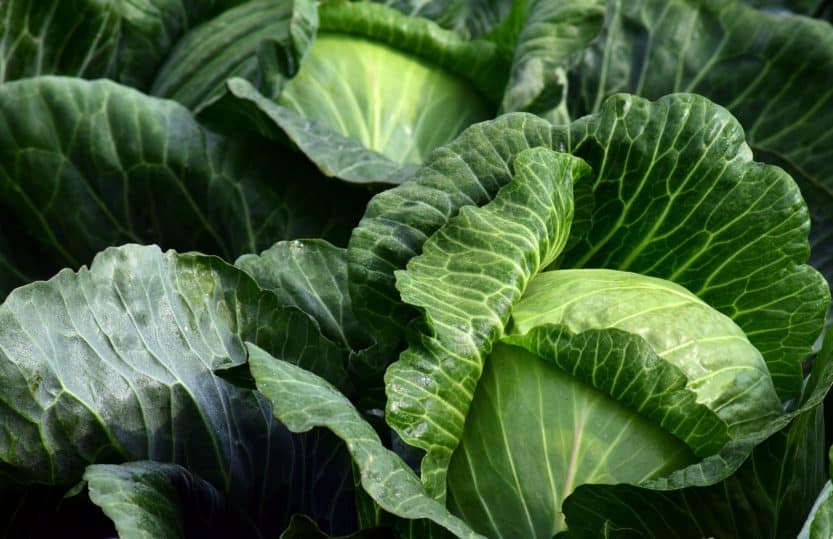
Cabbage is a staple in many cuisines worldwide, and planting it in November allows Florida gardeners to take advantage of the cooler weather that this cruciferous vegetable craves. Cabbage can be grown as a spring or fall crop, but planting in November can yield some delicious heads just in time for Thanksgiving and winter recipes.
To produce healthy cabbage heads, start by selecting a sunny spot with fertile, well-drained soil. Cabbage prefers slightly acidic to neutral soil (pH 6.0 to 7.5) enriched with organic compost. Sow seeds about ¼ to ½ inch deep, ideally in rows spaced 18 to 24 inches apart. Once seedlings are 2-3 inches tall, thin them so that plants are spaced about 12-18 inches apart.
Regular watering is essential throughout the growing period. Cabbage is prone to various pests such as aphids and caterpillars, so be diligent in monitoring for these intruders. Organic pest control methods, including neem oil or introducing beneficial insects like ladybugs, can help protect your plants without the use of harsh chemicals.
From savory slaws to hearty soups, cabbage can enhance any meal, and it’s also rich in vitamins C and K as well as fiber. With a little attention and care, November-planted cabbage can provide a bountiful harvest that can be stored for months when harvested properly.
Carrots
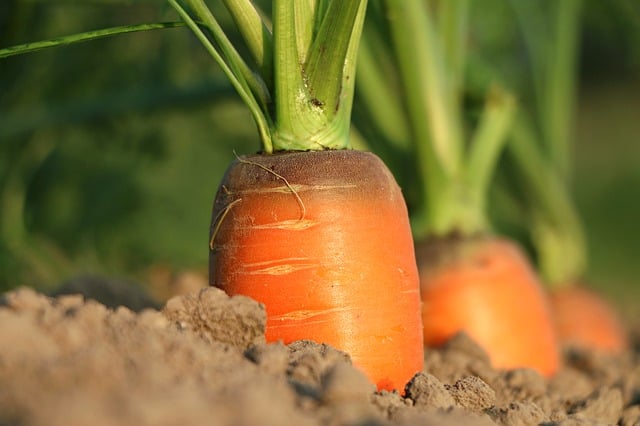
Carrots are a versatile root vegetable cherished for their sweet flavor and crunchy texture. November is an excellent time to plant carrots in Florida, as they thrive in the cooler weather and can provide rewards well into the early spring season. These vibrant vegetables are further enriched with beta-carotene, making them a fantastic addition to any garden.
To successfully grow carrots, select a sunny location with loose, sandy soil that drains well. Dense, compacted soil can hinder the growth of carrots, leading to malformed roots. Before planting, amend the soil with compost or rotted manure to enhance nutrient content. Sow carrot seeds about ¼ inch deep, spaced 1-2 inches apart in rows that are approximately 12-18 inches apart.
Because carrot seeds are tiny, it’s essential to keep the soil consistently moist, particularly during germination, which typically takes 7-21 days. Lightly watering the surface of the soil can help prevent crusting, making it easier for seedlings to emerge. Since carrots can be susceptible to pests such as root maggots, rotating carrot crops from year to year and using floating row covers can help reduce pest pressure.
Carrots can be harvested at various sizes, depending on personal preference. Early harvesting not only provides fresh, crunchy snacks but also encourages the remaining carrots to grow larger. Rich in beta-carotene, fiber, and antioxidants, carrots are not only nutritious but also add vibrant color and flavor to salads, stews, and even baked goods.
Cauliflower
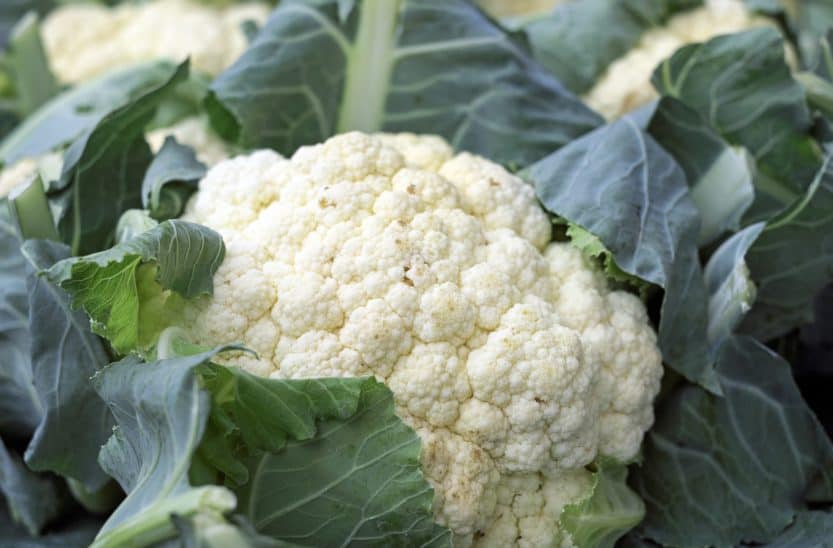
Cauliflower is a nutritional powerhouse that adds elegance to any meal with its unique texture and versatility. This cool-season crop does particularly well when planted in November, as it requires the cooler temperatures to form its beautiful white heads. For successful cultivation, cauliflower needs rich, well-draining soil that is packed with organic matter. This creates an ideal environment for the plant to develop and flourish.
When planting cauliflower, aim for a sunny location and ensure the soil pH is around 6.0 to 7.0. Sow seeds about ½ inch deep, spacing them roughly 18-24 inches apart in rows. Cauliflowers are sensitive to weather extremes, so be aware that they may require additional protection from frosts, as young seedlings are particularly vulnerable.
To ensure uniform growth, water regularly and keep the soil consistently moist, especially during dry spells. Nutrient-rich fertilizers, applied according to package instructions, will also promote healthy head development. As the cauliflower heads begin to form, consider blanching them by tying the leaves over the heads to protect them from sunlight—this helps maintain their creamy color and delicate flavor.
Cauliflower is not only delicious roasted, steamed, or mashed, but it is also rich in vitamins C, K, and B6, as well as fiber, making it a beneficial addition to your diet.
Celery
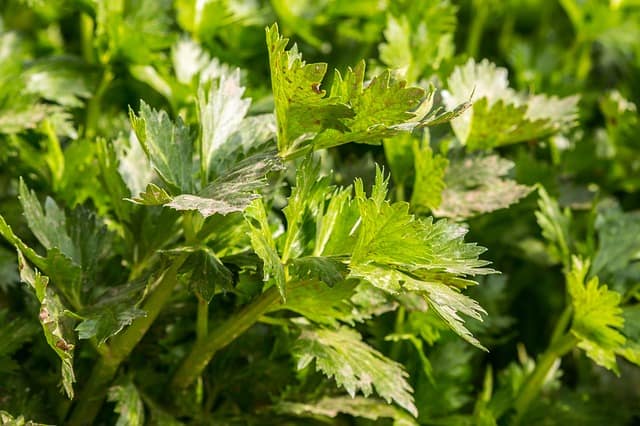
Celery is a refreshing, crunchy vegetable that brings a delightful crunch to salads and serves as a beloved snack when paired with dips. Planting celery in November is a strategic choice, as this cool-weather crop thrives in the milder Florida climate and can yield a large harvest if cared for properly.
For successful cultivation, select nutrient-rich, well-draining soils with a pH between 6.0 and 7.0. Celery roots develop deep, so it’s crucial to ensure that the soil is loose and well-aerated. Sow seeds about ¼ inch deep and space them around 12 inches apart, giving them room to grow into full-sized stalks.
Celery requires consistent moisture—much more than many other vegetables—so daily watering may be necessary, especially during dry spells. Additionally, applying an organic mulch can help retain soil moisture and suppress weeds. Fertilize your celery at regular intervals with a balanced fertilizer to promote healthy growth and ensure robust flavors.
Celery typically matures in about 130 to 140 days, providing you with fresh, crisp stalks that can be enjoyed raw, in soups or stews, or as part of vegetable platters. Beyond its versatility, celery is known for being low in calories and high in hydration, making it a valuable staple in healthy eating.
Cucumbers
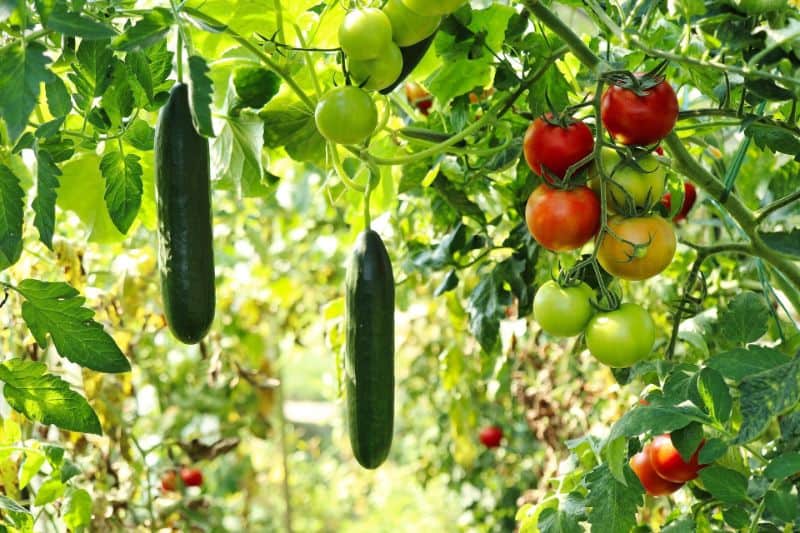
Cucumbers are a refreshing addition to your garden, bringing crispness to salads and a burst of hydration to summer meals. While traditionally thought of as a summer vegetable, November can also provide an excellent opportunity to plant cucumbers in Florida’s warmer regions, especially for varieties suited for fall planting. With proper care, you can enjoy a bountiful harvest before the colder months set in.
To cultivate cucumbers, begin by preparing the planting site in a sunny area with well-draining soil enriched with compost to promote healthy growth. Cucumbers thrive in slightly acidic soils with pH levels between 6.0 and 6.8. You can either plant seeds directly in the soil about 1 inch deep or transplant seedlings if you’ve started them indoors. Space the seeds or seedlings approximately 36 inches apart in rows to allow for the sprawling growth habits of cucumber plants.
Regular watering is essential, especially as cucumbers have high water content and need consistent moisture to thrive. During dry weather, consider using soaker hoses or drip irrigation to keep the soil consistently moist but not waterlogged. Additionally, aiming to provide support through trellises can help conserve space and improve air circulation around the plants, resulting in better yields.
Harvest cucumbers when they are firm and about 6-8 inches long; regular harvesting encourages more fruit production. These cucumbers are not just a crunchy addition to salads; they are also low in calories and offer a high water content, keeping you hydrated in warm weather.
Eggplant
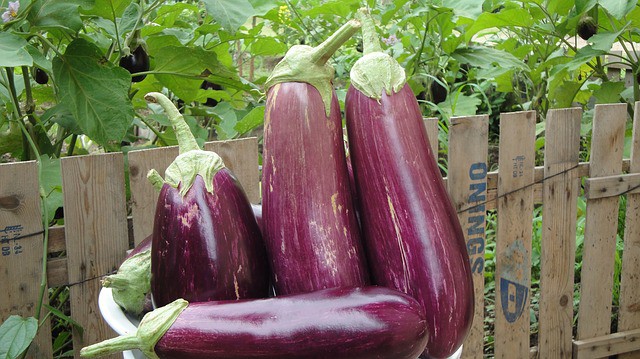
Though often considered a staple of summer gardens, eggplant can also be planted in late November in Florida, particularly in the southern regions where temperatures remain relatively mild. This heat-loving vegetable can continue to produce well into the cooler months, making it an excellent choice for extended harvests.
When preparing to plant eggplant, select a sunny location with well-draining, nutrient-rich soil. The ideal soil pH for eggplant is between 5.5 and 6.8. Prior to sowing, incorporate plenty of compost or well-rotted manure to give your plants the nutritional boost they need. Sow seeds indoors about 8-10 weeks before the last expected frost date or plant seedlings directly into the garden space approximately 18-24 inches apart.
Eggplants appreciate moisture, so regular watering is key. However, take care to avoid waterlogging, as eggplant roots can be sensitive to overly saturated conditions. You may also want to use mulch to help retain soil moisture and prevent weed growth. Additionally, keep an eye out for common pests such as aphids and spider mites; organic management strategies, including neem oil sprays and insecticidal soaps, can help mitigate these issues.
Eggplants come in various shapes, sizes, and colors, from glossy purple to striped varieties. Not only do they add visual appeal to dishes, but they are also low in calories and high in fiber, vitamins, and minerals, making them both nutritious and delicious when roasted, grilled, or stuffed.
Kale

Kale is the ultimate superfood, and planting it in November provides gardeners in Florida with a supply of rich, leafy green vegetables throughout the winter months. This hardy, cold-tolerant crop can withstand a light frost, which often enhances its flavor by making it sweeter.
For successful kale cultivation, choose a site that receives full sun for at least six hours a day. Kale thrives in well-draining, organic-rich soils with a pH between 6.0 and 7.0. Start by sowing seeds about ¼ inch deep, spacing them 12-24 inches apart, or opt for transplants if you have started seeds indoors.
Kale requires consistent moisture, so be diligent about watering, especially during dry spells. Applying mulch will not only help retain moisture but will also suppress weeds and maintain a more stable soil temperature. Fertilizing with a balanced organic fertilizer can further enhance growth, as kale is a nutrient-loving plant.
One of the great advantages of kale is its incredible versatility. From simple sautés and salads to smoothies and soups, kale can elevate a plethora of dishes. Its robust nutrient profile boasts high levels of vitamins K, A, and C, as well as iron and calcium—making it a fantastic addition to any healthy diet.
Lettuce
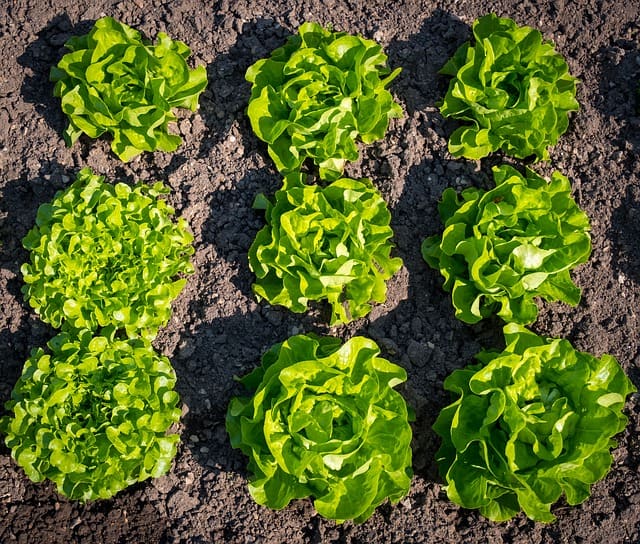
November is the perfect time to plant various types of lettuce in Florida gardens. Lettuce thrives in cooler temperatures, making it an ideal crop to sow during this month. With numerous varieties available, from crisp romaine to tender butterhead and peppery arugula, lettuce can easily be incorporated into salads, sandwiches, and wraps.
Select a garden spot that receives ample sunlight—about 6 hours a day is ideal. Lettuce flourishes in loose, well-draining soil with a pH level of 6.0 to 7.0. Before planting, mix in compost to provide a nutrient-rich environment. You can sow seeds directly in the ground about ¼ inch deep, spacing them roughly 10-12 inches apart in rows 12-18 inches apart.
Since lettuce is a shallow-rooted plant, it requires frequent watering to keep the soil consistently moist. Make sure to monitor for signs of wilting, particularly during dry spells. Using mulch can help with moisture retention and prevent weeds from competing for nutrients.
Additionally, be mindful of pests; lettuce can attract aphids and cutworms, so gentle organic pest control methods should be employed if necessary. The quick-growing nature of lettuce means it typically matures in just 30 to 60 days, allowing for multiple harvests throughout the season.
Lettuce is not only low in calories but also provides significant hydration, making it an excellent choice for light, refreshing meals. With its crisp texture and various flavors, it adds an essential component to your winter vegetable garden.
Onions
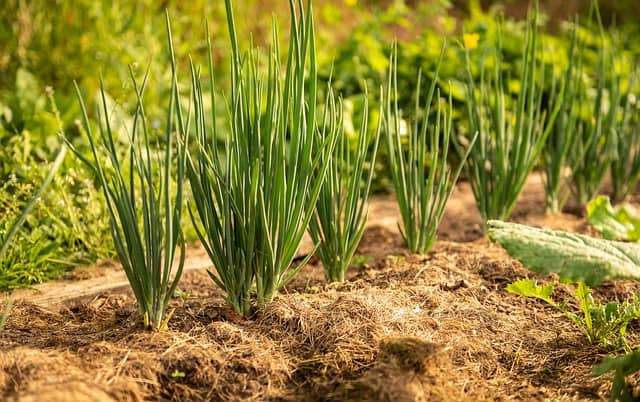
Onions are a kitchen staple, valued for their versatility and flavor-enhancing properties. November is an optimal time to plant both short-day and long-day onion varieties in Florida, particularly for those in warmer regions. Whether you’re planting from seed, sets, or transplants, this hearty vegetable is sure to flourish.
For successful onion cultivation, choose well-drained, loose soil rich in organic matter. Aim for a soil pH around 6.0 to 6.8. Plant onion sets (small bulbs) or seedlings about one inch deep and spaced 4-6 inches apart in rows that are approximately 12-18 inches apart. If starting from seed, consider beginning them indoors before transferring to your garden.
Onions require consistent watering but be cautious not to overwater. Maintaining the soil’s moisture will help establish strong root systems. Adding mulch around the onions can assist in retaining moisture, moderating soil temperature, and minimizing weed growth. Additionally, applying a balanced fertilizer will help promote vigorous growth and tasty bulbs.
Harvesting typically occurs when the tops of the onions turn yellow and begin to fall over, usually several months after planting. Not only are fresh onions a source of flavor, but they also bring numerous health benefits, including antioxidants and properties that may reduce the risk of certain diseases.
Peas

Peas are delightful additions to your garden in November, as they thrive in the cooler weather and can produce bountiful harvests. This legume is not only enjoyable to eat fresh but also offers essential nutrients and a charming aesthetic to the garden with its lush green vines and delicate flowers.
To plant peas successfully, select a location with full sun and well-draining, loamy soil with a pH of 6.0 to 7.0. Before planting, you can improve soil fertility by incorporating organic matter like compost. Sow seeds about an inch deep, spacing them 1-2 inches apart in rows that are 18-24 inches apart. Consider using a trellis or string to support climbing varieties, helping them maximize vertical growth while minimizing ground space.
Consistent moisture is crucial for peas; make sure to water regularly, especially during dry spells. Watch for signs of pests such as aphids or webbing, and consider using row covers during the initial growing stages to protect young plants. Peas also benefit from a light application of fertilizer during their growth period, which will help promote lush foliage and abundant pods.
You can expect to start harvesting peas as early as 60 days after planting, depending on the variety. Fresh, sweet peas are perfect raw in salads, sautéed, or steamed, and they’re packed with vitamins A, C, and K, as well as fiber, making them a healthy addition to meals.
Peppers
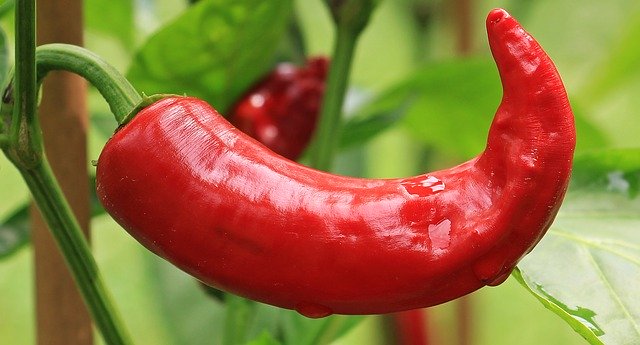
Peppers are a garden favorite, offering a range of flavors from sweet to spicy. Planting peppers in November in Florida can be advantageous, as the milder temperatures help them establish strong roots and promote fruit set through the cooler months. Varieties such as bell peppers, jalapeños, and habaneros can thrive with proper care.
Select a sunny spot for planting, as peppers require at least six hours of direct sunlight a day. The ideal soil for peppers is well-draining and rich in organic matter, with a pH level around 6.0 to 6.8. When planting, space seedlings about 18-24 inches apart to allow for ample airflow and growth.
Regular watering is essential as peppers are sensitive to fluctuations in moisture. Dry conditions can lead to stress, resulting in blossom drop or poor fruit development. Incorporating organic mulch can help retain moisture and suppress weeds, benefiting the plants’ overall health. Additionally, providing a balanced fertilizer during the growing season will encourage robust growth and heavy fruit set.
Peppers typically take anywhere from 60 to 90 days from planting to harvest, depending on the variety. The vibrant colors and crisp textures of fresh peppers make them an excellent addition to salads, stir-fries, or as snacks. They are also fantastic sources of vitamins A, C, and B6, making them not only delicious but also healthful.
Potatoes
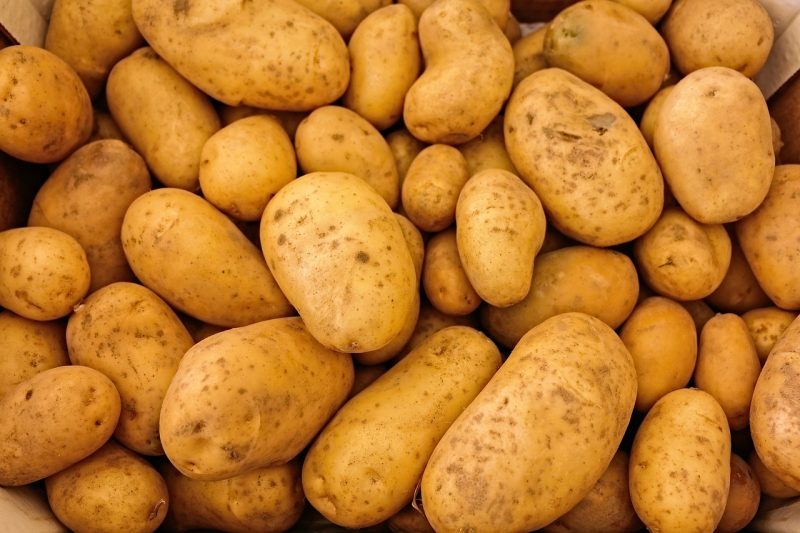
Planting potatoes in November allows Florida gardeners to take advantage of the cool season, promoting healthy growth and robust tuber development before the heat of spring returns. Potatoes are a versatile and beloved vegetable, known for their adaptability in various culinary applications—from creamy mashed potatoes to hearty soups.
To begin, choose a well-drained location with plenty of sunlight. Prepare your soil by tilling it to a depth of about 12 inches and incorporating organic matter like compost to enhance fertility. The ideal soil pH for potatoes is between 4.5 and 6.0, making slightly acidic soil preferable.
When it comes to planting, select certified seed potatoes instead of grocery store varieties, as the latter may harbor disease. Cut the seed potatoes into pieces, with at least one “eye” per piece, and allow them to sit at room temperature for a day or two to form a protective callous. Plant these pieces about 3-4 inches deep and space them 12 inches apart in rows that are 3 feet apart. Investing in a technique called “hilling,” where you periodically mound soil around the base of the plants, can encourage tuber production and deter weed growth.
Regular watering is essential, especially as the plants begin to flower, signaling that the tubers are forming. Be mindful not to overwater, as soggy soil can lead to rot. Once the foliage begins to yellow and die back, it’s time to harvest your potatoes, which should be done carefully to avoid damaging the tubers.
Potatoes are not only delicious but also pack a punch of vitamins C and B6, potassium, and dietary fiber, making them a satisfying addition to your fall and winter meals.
Radishes
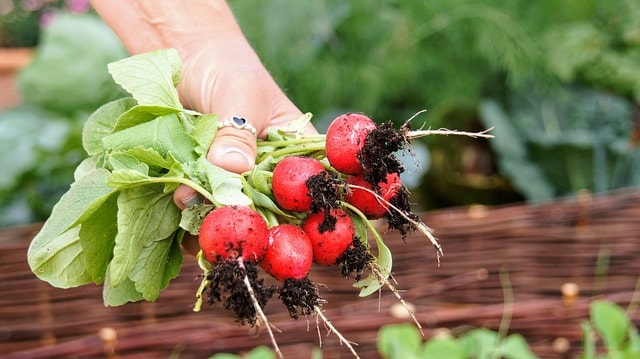
Radishes are among the fastest-growing vegetables, making them a perfect choice for November planting in Florida. Known for their crisp texture and peppery flavor, radishes add a refreshing crunch to salads and dishes. Additionally, they can deter pests when planted in proximity to other crops, making them a beneficial companion plant.
For optimal growth, plant radishes in well-draining soil rich in organic matter and ensure exposure to full sun. The ideal soil pH for radishes is between 6.0 and 7.0. Since radishes have shallow root systems, prepare the soil by loosening it to about 8 inches deep and incorporate compost to improve drainage and fertility.
Sow radish seeds directly into the garden, spacing them about 1 inch apart and covering them with a light layer of soil—ideally around ½ inch deep. November vibes provide the ideal conditions for radishes, as they typically take only about 25 to 30 days to mature, yielding a quick harvest that can fit into a busy garden schedule.
Regularly watering the young plants will help them develop a smooth texture and maintain their crispness. Since radishes grow quickly, be sure to watch the soil moisture carefully and thin seedlings as they grow to avoid overcrowding.
You can enjoy radishes raw, roasted, or pickled, and their impressive nutritional profile includes vitamin C, potassium, and antioxidants, making them a healthy and colorful addition to any meal.
Spinach

Spinach is a leafy green powerhouse that thrives in the cooler months of Florida’s gardening calendar. Planting spinach in November allows you to take advantage of the moist, mild weather, leading to sweeter and more tender leaves. Rich in vitamins A, C, and K, as well as iron and folic acid, spinach is a versatile ingredient that can elevate salads, smoothies, and cooked dishes.
For growing spinach, select a planting site that receives full sun to partial shade, as too much heat can cause the plants to bolt prematurely. The ideal soil conditions include well-draining, loamy soil with a pH between 6.0 and 7.0. Prior to planting, improve your soil’s fertility and drainage by incorporating compost and ensuring the soil is crumbly.
Sow spinach seeds approximately ½ inch deep and 2 inches apart in rows that are 12-18 inches apart. Spinach can take anywhere from 40 to 50 days to mature, making it a relatively quick-growing crop when planted in November. To prolong your harvest, consider sowing seeds every couple of weeks for a continuous supply throughout the winter.
Consistent moisture is crucial for spinach; keep the soil evenly moist but not waterlogged. Utilizing mulch to retain moisture and suppress weeds can also enhance growth. Watch out for pests like aphids and slugs, which can be managed organically.
Summer Squash
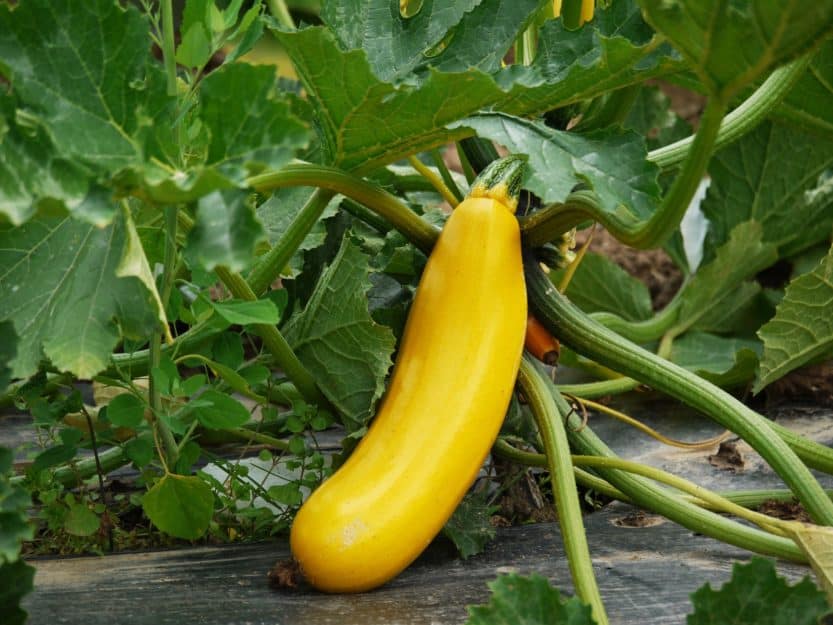
November is an ideal time to plant summer squash in Florida, particularly in the southern regions where the temperatures remain mild. This fast-growing vegetable produces an abundance of fruit, ranging from zucchini to yellow squash, making it a popular choice for home gardeners.
To cultivate summer squash, begin by selecting a sunny spot in your garden with well-draining soil. Squash plants grow best in soil with a pH between 6.0 and 7.0, and they thrive when enriched with organic matter. Before planting, prepare the soil by tilling it and adding compost or well-rotted manure.
Plant seeds about 1 inch deep and space them approximately 2 feet apart, as the plants will spread out as they grow. If you prefer, you can also start them indoors in seed trays and transplant them outdoors after a few weeks. Make sure to water young plants consistently to help establish strong root systems, but avoid allowing the soil to remain soggy.
Given their love for warmth and moisture, summer squash will require frequent watering, especially during dry spells. Fertilizing every four to six weeks with a balanced fertilizer can help promote rich foliage and abundant fruit. Be cautious of common pests like squash bugs and cucumber beetles—crop rotation and companion planting can help undermine these pests.
With a short time to maturity (typically around 60 days), summer squash thrives as a warm-season crop. Its culinary versatility lends itself to various dishes, including casseroles, stir-fries, and baked goods, while its high water content and rich nutrient profile make it a delightful and healthful addition to any meal.
Tomatoes
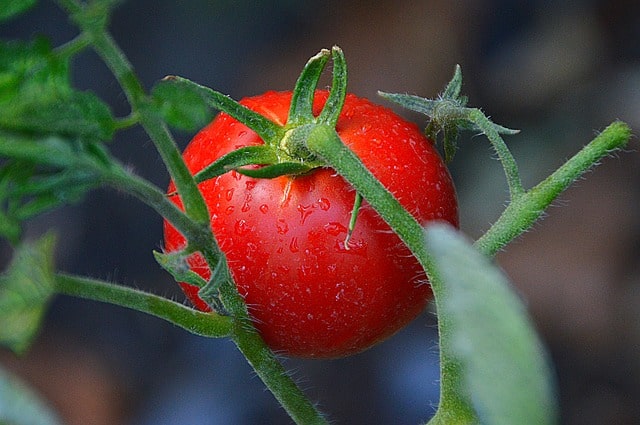
In November, planting tomatoes offers Florida gardeners a chance to reap fresh fruit as the climate transitions from hot summer to cooler fall temperatures. This beloved vegetable is a cornerstone of countless recipes, from salads to sauces, making it a must-have in any home garden.
For your tomato plants, select a location that receives a minimum of 6-8 hours of sunlight daily. Tomatoes grow best in well-draining, nutrient-rich soil, ideally with a pH of 6.0 to 6.8. To enhance soil quality, mix in compost or a slow-release organic fertilizer before planting.
You can start tomatoes from seeds or purchase healthy seedlings from a local nursery. If starting from seeds, sow them indoors 6-8 weeks before the desired transplant date. When planting, bury seedlings up to their first true leaves to encourage strong root development. Space the plants approximately 18-24 inches apart, as good air circulation is essential for preventing diseases.
Regular watering is crucial for tomato plants, especially during flowering and fruit set. Consistent moisture helps reduce blossom drop and promotes juicy fruit development. Incorporating a layer of mulch can help retain soil moisture and deter weeds. As plants grow, support them with cages or stakes to prevent sprawling and to keep the fruits off the ground.
Be vigilant for tomato pests like hornworms and aphids, and manage them with organic methods, including hand-picking or using insecticidal soap. With proper care, your tomato plants can yield fruit within 60 to 85 days of planting, providing you with delicious, home-grown tomatoes just in time for holiday meals.
Turnips
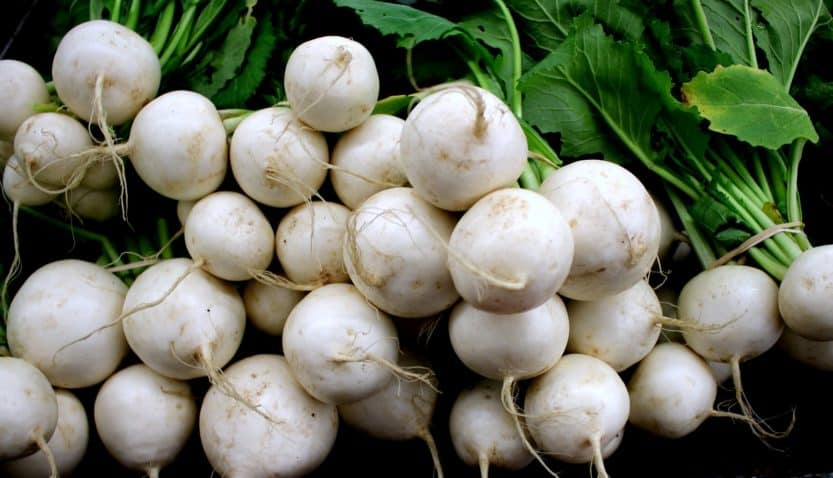
Turnips are an often-overlooked but highly nutritious vegetable that thrives when planted in November. With their crisp texture and slightly peppery flavor, they can be enjoyed raw in salads or roasted as a side dish. Turnips are also rich in vitamins C and K and are an excellent source of dietary fiber.
When planting turnips, choose a well-draining and fertile site that receives full sun to partial shade. For optimal growth, the soil pH should remain between 6.0 and 7.5. Improve your soil by incorporating organic matter or compost before sowing seeds.
Plant turnip seeds directly in the garden, spacing them about 1 to 2 inches apart and covering them with ½ inch of soil. Since turnips grow quickly, with a maturation time of about 30 to 60 days, it’s ideal to sow them in batches for a continuous harvest throughout the winter months.
Ensure that the soil remains consistently moist, particularly during the early growth stages. Watering deeply but less frequently will encourage the roots to grow strong and develop their fullness. As turnips mature, thinner seedlings will help ensure each plant has enough space and nutrients to thrive.
Fruits to Plant in November in Florida
Grapes
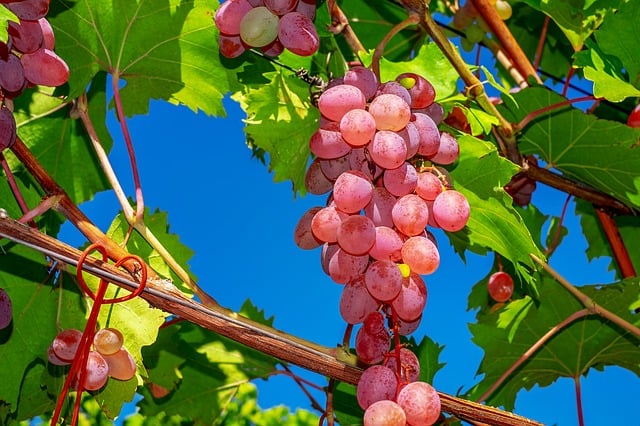
Planting grapevines in November can set the stage for a fruitful vineyard, particularly as Florida’s climate supports the growth of various grape varieties. Grapes are not only enjoyable fresh, but they can be fermented into wine, dried into raisins, or made into jellies, making them a versatile choice for any garden.
For optimal growth, select a sunny spot that receives at least 7-8 hours of direct sunlight per day. Grapevines thrive in well-drained soil with a slightly acidic to neutral pH (around 5.5 to 7.0). Prior to planting, amend your soil with organic matter and ensure that the planting area is clear of any debris or weeds.
When planting grapevines, space each vine 6 to 8 feet apart depending on the variety, as they can spread considerably. Dig a hole large enough to accommodate the roots, placing the graft union slightly above the soil line to prevent rot. Maintain consistent moisture during the establishment phase, but be cautious of overwatering, which can cause root diseases.
Supporting your grapevines with trellises or arbors is important for their growth, as they naturally climb and benefit from proper airflow around the leaves and fruit. Fertilize vines in the spring with a nitrogen-rich fertilizer to promote healthy growth but reduce fertilizer applications as the fruit begins to set.
With sufficient care, grapevines can yield fruit within 2-3 years. Enjoy your harvest fresh, or consider making homemade wine or chutney. Grapes are not only delicious but also rich in antioxidants, vitamins C and K, and various phytonutrients, adding a healthful boost to your diet.
Kumquats
Kumquats are a unique and delightful citrus fruit that can be planted in November, providing beauty and flavor to your Florida garden. Known for their sweet peel and tangy flesh, these small fruits can be eaten whole, making them a fun snack or addition to salads and desserts.
When planting kumquats, select a spot that receives full sun, as this will help the trees thrive. These trees prefer well-drained soil with a slightly acidic pH (around 6.0 to 6.8). Before planting, amend your soil with organic compost to improve drainage and fertility.
Kumquat trees can be planted from seeds, seedlings, or grafted trees. When planting, dig a hole large enough to accommodate the root system, placing the tree at the same depth as it was in the pot. Space trees at least 8-10 feet apart to allow for their natural spread.
Water is crucial for young kumquat trees, especially during dry spells; however, be mindful not to overwater, as the roots can be sensitive to soggy conditions. Once established, kumquats are relatively drought-tolerant. Fertilizing twice a year with a balanced citrus fertilizer will promote healthy growth and fruiting.
Expect to start harvesting kumquats within 1 to 2 years of planting. When the fruit turns a vibrant orange color, it’s ready for picking. These fruits are packed with vitamin C and fiber, making them a nutrient-dense addition to your diet while also offering a unique flavor profile.
Mandarin Oranges
Mandarin oranges are another delightful citrus option for planting in November, thriving beautifully in Florida’s climate. These sweet, juicy fruits are incredibly popular due to their easy-to-peel nature and delightful taste, making them a snack-time favorite for both kids and adults.
For successful mandarin planting, choose a sunny location that receives at least 6-8 hours of sunlight daily. The soil should be well-draining, and mandarin trees prefer slightly acidic conditions with a pH between 5.5 and 6.5. Before planting, enrich your soil with compost or well-rotted manure to enhance its nutrient profile.
You can plant mandarin oranges in the ground or in containers, particularly if you want the option to move them indoors during colder months. Plant young trees at the same depth as they were containerized and provide adequate spacing of about 8-10 feet to promote air circulation and prevent disease.
Regular watering is essential for newly planted mandarin trees. Maintaining consistent moisture during their establishment phase will help them grow stronger; however, allow the top layer of soil to dry before watering again to avoid root rot. Once established, mandarin trees require less frequent watering.
Oranges
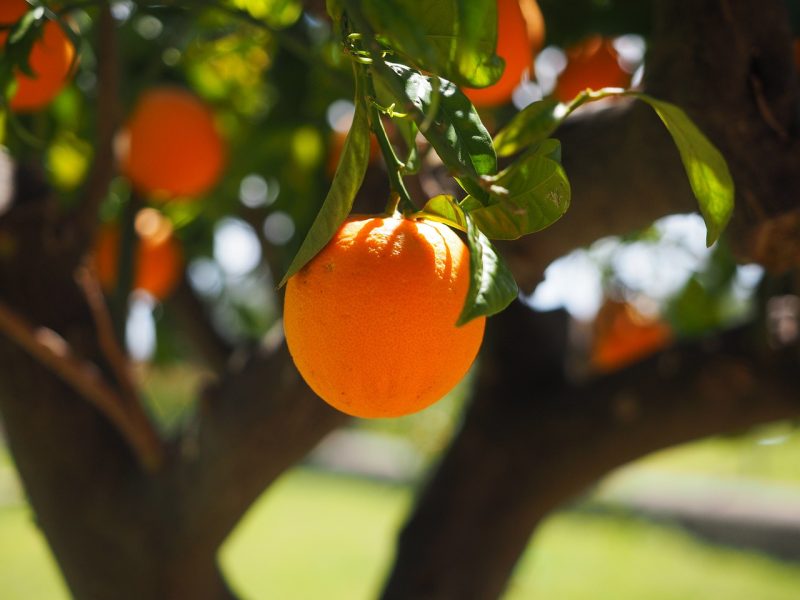
November is an ideal time to plant orange trees in Florida, as they can flourish with the cooler temperatures and increased rainfall typical of this month. While many varieties of oranges can grow successfully in the state, navel and Valencia are among the most popular due to their sweetness and juiciness.
For optimal growth, select a location that offers full sunlight, as orange trees thrive in bright conditions. The soil should be well-draining and slightly acidic, with a pH between 5.5 and 6.5. Before planting, improve your soil by incorporating organic compost, which enriches the nutrient content and promotes healthy root development.
When planting orange trees, dig a hole that is twice the width of the root ball and equally deep. This will allow the roots to spread out easily. Position the tree so that the root flare is level with the soil surface, then backfill with soil, ensuring there are no air pockets. Spacing is crucial, so plant your orange trees about 12 to 25 feet apart, depending on the variety’s mature size.
Water regularly, especially during the establishment phase, to promote strong root growth. However, be wary of overwatering, which could lead to root rot. Fertilize with a well-balanced citrus fertilizer in spring and fall to enhance growth and fruit production.
After a couple of years, you can expect to see fruit forming. Depending on the variety, oranges typically reach maturity 6-12 months after flowering. Not only are oranges delicious and versatile, used in juices, desserts, and savory dishes, but they are also packed with immune-boosting vitamin C and fiber.
Papayas
Papayas are an excellent choice for planting in Florida during November, as they thrive in the warm, tropical climate. Known for their sweet, juicy flesh, papayas are a great addition to your fruit garden, enjoyed fresh, in smoothies, or as an ingredient in tropical salsas.
Choose a location with full sun exposure, as papayas require at least 6 hours of direct sunlight each day. The plants grow best in rich, well-drained soil that has a neutral to slightly acidic pH (between 6.0 and 7.0). Before planting, amend the soil with compost and well-rotted manure to ensure ample nutrients.
Plant papaya seeds directly in the ground or start them in seed trays, transplanting when they’re a few inches tall. Space the seeds or seedlings around 3-10 feet apart, depending on the growing space available and your intended cultivation method. If planting multiple papayas, keep in mind that they tend to grow tall and may compete for sunlight.
Watering is crucial, particularly early on when the plants are establishing their root systems; ensure the soil remains evenly moist but never waterlogged. Papayas prefer regular watering, so dry spells, especially in Florida’s warmer months, may require supplemental irrigation. Fertilize with a balanced fertilizer every few months to support vigorous growth and fruiting.
Papayas usually begin to fruit within 6-12 months of planting, depending on the variety and growing conditions. The fruit is ripe when the skin turns from green to a bright yellow-orange. With a rich profile of vitamins A, C, and E, papayas not only enhance the flavor of your dishes but also contribute to your overall health.
Passionfruit

November is the perfect time to plant passionfruit vines in Florida, as they thrive during the cooler months and can quickly establish themselves for an abundant harvest in the spring and summer. Known for their aromatic and flavorful fruits, passionfruits are great for adding to drinks, desserts, and salads, and their vibrant flowers also enhance garden attractiveness.
For a successful passionfruit crop, select a sunny location with well-drained soil enriched with organic matter. The ideal soil pH is slightly acidic, around 6.0 to 6.5. Prepare your planting site by digging a hole that allows for good root growth, incorporating compost or aged manure into the soil to boost its fertility.
When planting passionfruit, space plants about 10-15 feet apart as they are vigorous climbers. You can provide a trellis or support structure to help the vine grow upwards, maximizing air circulation and sunlight exposure. Passionfruit vines require good drainage, so avoid overly compacted soils that can retain excess moisture.
Consistent watering is essential, particularly during dry spells, but be cautious not to overwater; doing so can lead to root rot and other fungal issues. Fertilize your passionfruit vines with a balanced fertilizer every few months to promote healthy growth and increased fruit production.
Pineapples
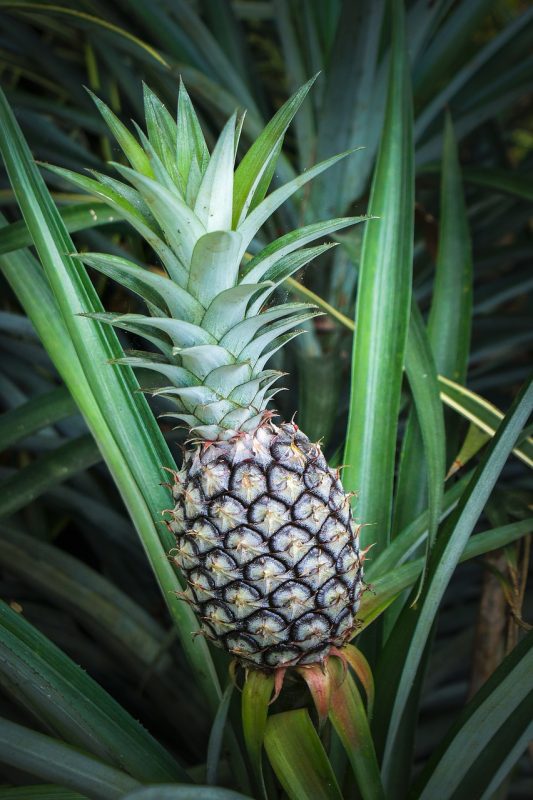
Pineapples are uniquely suited for Florida’s warm climate, making November an exceptional time to plant these tropical treasures. While technically a bromeliad rather than a traditional fruiting plant, pineapples offer sweet, juicy rewards that are hard to beat. They add a tropical flair to both gardens and culinary creations.
To start your pineapple journey, you don’t need to purchase seeds. Instead, you can use a pineapple crown, the top part of the fruit. Select a healthy pineapple with vibrant green leaves, and after removing the crown, let it dry for a few days to callous the cut end. This helps to prevent rot when planted.
For planting, choose a sunny location influenced by the full brightness of the Florida sun. Pineapples prefer well-draining sandy or loamy soil with a slightly acidic to neutral pH level (between 5.0 and 7.0). Plant the crown between 2-3 inches deep, ensuring the leaves are above the soil line.
Water the newly planted crown significantly for the first few weeks to encourage root development. After that, pineapples are relatively drought-tolerant, so it’s best to allow the soil to dry out between watering. Fertilize using a balanced fertilizer or a slow-release option designed for tropical plants to nourish growth.
With patience, your pineapple will grow, typically maturing in 18-24 months. The plant will produce a single pineapple at the center of the leaves, which will develop into a sweet fruit. Harvest when the pineapple is golden and fragrant, celebrating the fruits of your labor. Pineapples are rich in vitamin C and bromelain, making them a nutritious addition to your diet.
Pomelos
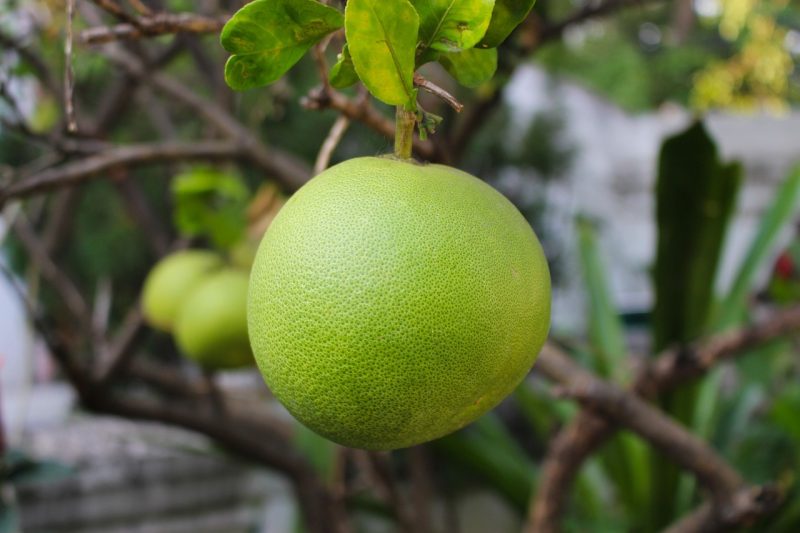
Pomelos, the largest citrus fruit, are another wonderful option for November planting in Florida. Known for their sweet and mild flavor, pomelos stand out in both taste and size, making them a delightful addition to your garden palette. Their thick rind and juicy flesh make them a unique fruit enjoyed fresh or in salads.
When selecting a spot to plant pomelos, ensure you choose an area with full sun exposure for optimal growth. The trees flourish in well-drained soil with a slightly acidic pH (around 6.0 to 7.0). If your garden soil lacks nutrients, it’s advisable to enhance it with organic compost before planting.
Plant your pomelo tree either as a grafted seedling or a young tree, digging a hole that accommodates the root ball without crowding. Space your pomelo trees approximately 15-20 feet apart, as they can grow quite large and require ample space for airflow.
Consistent watering is essential during the establishment phase, especially in their initial few months. After the tree is established, reduce watering frequency, allowing the soil to dry somewhat between watering sessions. A regular feeding schedule with a citrus-specific fertilizer during the growing season will help support development and fruit set.
Pomelo trees can take about 3-5 years to bear fruit, but the wait is worth it. Fruiting will usually occur in late summer to early fall. When harvesting, choose fruit that feels heavy for its size and has a fragrant aroma. Pomelos are high in vitamin C, potassium, and fiber, making them not only delicious but beneficial to your health.
Tangerines
Tangerines are a well-loved citrus fruit that thrive in Florida’s warm November climate, making them an excellent addition to any garden. These smaller citrus fruits are prized for their sweet, easy-to-peel segments, perfect for snacking or as an ingredient in various dishes.
When planting tangerines, seek a location that gets full sunlight, ideally at least 6-8 hours per day. Like other citrus varieties, tangerines flourish in well-drained soil with a pH of 5.5 to 6.5. Editing your soil with organic compost will help provide essential nutrients for young trees.
You can plant tangerines from grafted saplings, digging a hole that is twice as wide as the root ball for optimal growth. Space your trees around 10-15 feet apart to allow adequate room for their growth and airflow, which helps prevent fungal diseases.
Regular watering is crucial for young tangerine trees, especially during periods of drought. After establishment, these trees become somewhat drought-tolerant, yet regular watering during fruit set can significantly enhance yield. A balanced citrus fertilizer applied in early spring and mid-summer will promote robust growth and fruit production.
Watermelons
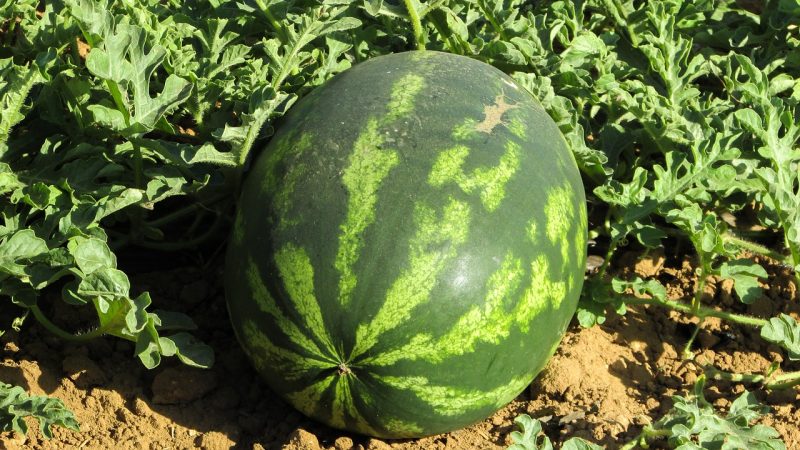
Although watermelons are typically considered a summer fruit, November is a great month to start planning for their early spring planting in Florida. This timing allows you to prepare for a successful growing season, leading to bountiful harvests in the hot summer months. Watermelons are well-loved for their refreshing sweetness, making them a must-have for summer picnics and barbecues.
To successfully grow watermelons, choose a sunny spot with abundant light and plenty of space for sprawling vines. Watermelons prefer well-drained, loamy soil enriched with organic matter. Aim for a soil pH of about 6.0 to 6.8 for optimal growth. Before planting, ensure that any weeds are cleared from the area, as watermelons require ample space and nutrition.
In November, you can either start seeds indoors or prepare fertile mounds directly in the garden for direct sowing later. When starting seeds indoors, use peat pots and plant them about 4-6 weeks before the last frost date. Once the seedlings have developed a few sets of leaves and the outdoor temperatures are consistently warm, you can transplant them outside.
When planting in the garden, position seeds 1 inch deep in groups of two or three within the mounds, spacing each mound about 3-4 feet apart. Watermelons need consistent moisture, especially during their growth and fruiting stages; however, avoid overhead watering to minimize foliage diseases. A weekly application of balanced fertilizer can help bolster healthy vines and fruit development.
Watermelons typically require about 80-90 days from planting to harvest, so plan accordingly. Look for signs of ripeness, such as a dull sheen on the fruit’s surface and a yellow spot where it touches the ground. Anticipating their juicy sweetness makes the effort worthwhile; watermelons are not just delicious but also hydrating and packed with vitamins A and C.
Flowers To Plant in November in Florida
Azaleas
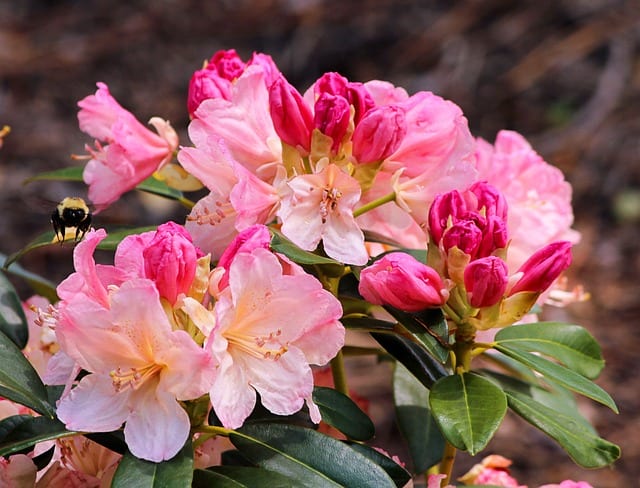
November presents a perfect opportunity to plant azaleas, one of Florida’s most beloved flowering shrubs. Their vibrant blooms create a striking display in gardens and landscapes, providing color when many other plants are dormant for the winter. Azaleas not only enhance your garden aesthetics but also attract various pollinators that contribute to biodiversity.
For successful azalea planting, find a location that receives partial shade, ideally receiving morning sun with protection from the intense afternoon heat. These plants prefer well-drained, acidic soil (pH 5.5 to 6.0). To ensure proper drainage, consider amending the soil with organic matter, such as pine bark or peat moss, which will also help retain moisture.
When planting azaleas, dig a hole that is wide and shallow, allowing the roots to spread out horizontally. Plant them at the same depth as they were in their pots, ensuring that you do not bury the trunk, as this can lead to rot. Space azaleas 2-3 feet apart to allow for their natural growth and to facilitate air circulation.
After planting, water thoroughly and establish a consistent watering schedule, particularly during dry spells. While azaleas are fairly drought-tolerant once established, their roots thrive in moist environments Without water stress, they can produce an abundance of blooms each spring. Fertilize with a slow-release acid fertilizer in early spring to support growth and flowering.
Expect to see blooms from your azaleas in late winter to early spring. Their beautiful array of colors—ranging from whites and pinks to vibrant reds and purples—makes them a favorite in many gardens. These hardy bushes can thrive for years, providing not only seasonal beauty but also low-maintenance landscaping.
Begonias
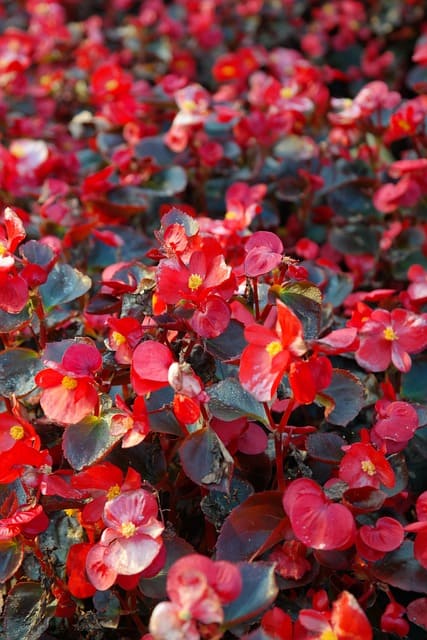
If you’re looking to add vibrant colors and lush foliage to your garden in November, begonias are an excellent choice. These versatile plants are celebrated for their stunning flowers and attractive leaves, making them suitable for shady spots in gardens and ideal for container arrangements. Their ability to bloom throughout the year, coupled with their wide variety of species, ensures that there’s a perfect begonia for every garden setting.
When selecting a location for begonias, opt for a partially shaded area, as they tend to flourish in less direct sunlight. Rich, well-draining soil with a pH between 5.5 and 6.0 will yield the best results. Prior to planting, amend your chosen area with compost to boost nutrient availability and drainage capabilities.
Chrysanthemums

Chrysanthemums, or mums as they are commonly called, are a seasonal staple in Florida gardens, especially during the fall months. Known for their vibrant colors and diverse blooming varieties, these hardy perennial plants can add a burst of life to your garden just as other flowers are beginning to fade. November is the perfect time to plant chrysanthemums, as the cooler temperatures encourage optimal growth and flowering.
When selecting a site for your mums, choose an area that receives full to partial sunlight. While they thrive in the sun, they also appreciate a bit of afternoon shade, especially in warmer areas. Chrysanthemums prefer well-draining soil enriched with organic matter, which helps retain moisture while preventing waterlogged conditions that can lead to root rot. The ideal pH for chrysanthemum growth hovers between 6.0 and 6.8.
When planting, dig a hole that is slightly larger than the root ball and place the plant within, ensuring the crown is at soil level. Space your chrysanthemums about 18 to 24 inches apart to allow for their full growth. Water immediately after planting and then maintain consistent moisture throughout their growing period but avoid overhead watering to reduce the risk of fungal diseases.
As chrysanthemums mature, you can promote bushy growth by pinching back the stem tips during the summer. This encourages more blooms and strengthening of the plant. From late fall to early spring, expect an array of colors that can range from deep purples and fiery reds to soft pastel yellows and whites. Not only do these flowers enhance garden beauty, but they are also an excellent choice for fall arrangements.
Daisies
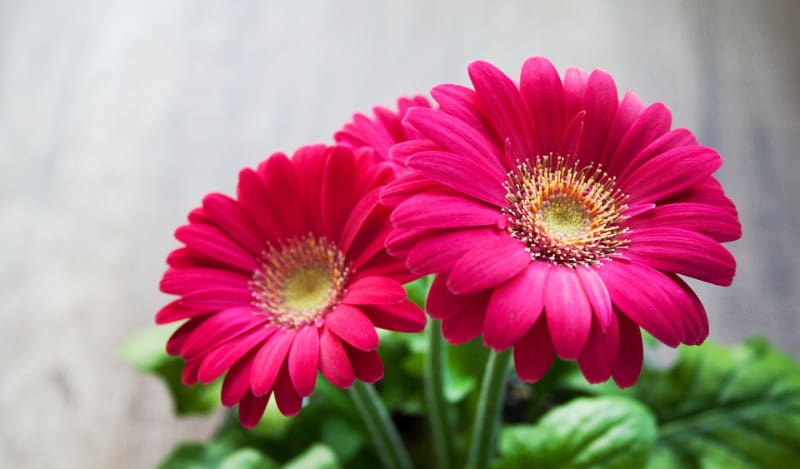
Daisies are another excellent choice for Florida gardens in November, bringing a classic charm and bright cheer to any landscape. With their iconic white petals and sunny yellow centers, daisies symbolize purity and innocence. They are easy to grow and can thrive in various soil types, making them a popular choice for both novice and experienced gardeners.
For successful cultivation, select a planting spot that enjoys full sun for at least six hours each day. Daisies prefer well-drained soil with a slightly acidic to neutral pH (around 6.0-7.0). Before planting, enrich the soil with organic compost to give the plants a nutrient boost and encourage healthy root growth.
When planting, space your daisy plants about 12 inches apart to allow for their spreading nature. Dig a hole deep enough to accommodate the root ball while ensuring that the crown is level with the soil surface. Water the plants immediately after planting and keep the soil consistently moist, particularly during the active growing season.
Daisies are low-maintenance but reward you with blooms that can last from late spring through fall. As a perennial, they will return year after year, making them an excellent investment for any garden. If you wish to extend their blooming period, consider deadheading spent flowers. This practice encourages the plants to produce fresh blooms while keeping the garden looking tidy.
Daisies also attract beneficial pollinators, such as bees and butterflies, enhancing the ecological health of your garden. Their resilience, low upkeep, and captivating blooms make them a favorite addition to the Florida landscape.
Gardenias

Gardenias are celebrated not just for their stunning, creamy white blooms but also for their intoxicating fragrance. November is a wonderful time to plant gardenias in Florida, as the cooler weather helps them establish roots before the warmer months arrive. These evergreen shrubs will not only beautify your garden but will also provide a sensory experience, filling the air with their delightful scent.
Choose a location for gardenias that receives morning sun and afternoon shade, as excessive direct sunlight can scorch their leaves. They thrive in acidic, well-drained soil with a pH of 5.0 to 6.5. To prepare your planting site, incorporate organic matter like peat moss or pine bark mulch to maintain moisture levels while ensuring good drainage.
When planting gardenias, ensure the hole is roughly twice the size of the root ball. Place the plant so that the top of the root ball is level with the surrounding soil. Space your gardenias at least 3 to 4 feet apart to allow adequate room for their full growth.
Regular watering is crucial, especially during their initial growth period. Keep the soil consistently moist but avoid overwatering, as gardenias are sensitive to soggy conditions. Providing a slow-release acid fertilizer in spring can promote lush growth and prolific flowering, as gardenias thrive on nutrients that support their rich, green foliage and beautiful blooms.
Geraniums
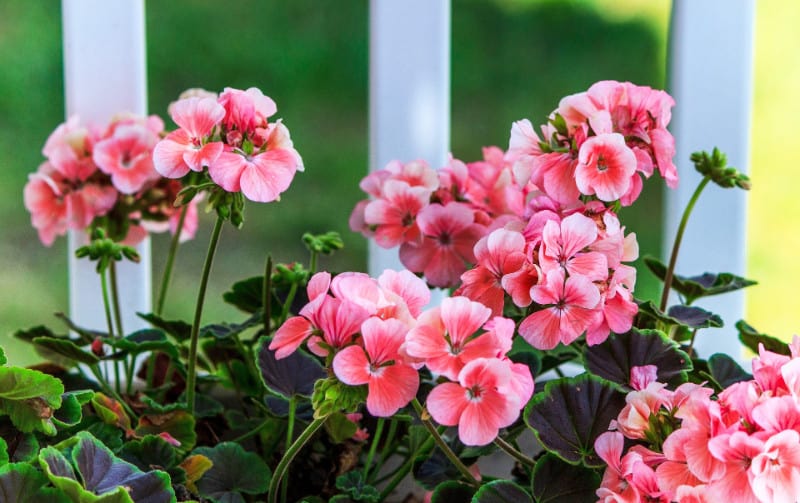
Geraniums are beloved for their versatility and resilience, making them an excellent choice for Florida gardens in November. These perennials can provide a splash of color that lasts from the cooler months into the warmer seasons, depending on the variety. Known for their attractive foliage and vibrant blooms, geraniums are ideal for borders, containers, or hanging baskets.
When choosing a planting location, look for a sunny spot, as geraniums thrive in full sun for at least six hours daily. They prefer well-draining soil that’s rich in organic matter. A pH level between 6.0 and 7.0 is suitable for optimal growth. Before planting, enrich the soil with compost or well-rotted manure to promote nutrient availability and drainage.
To plant geraniums, dig holes approximately 12 to 15 inches apart, as they can grow bushy and need sufficient room to spread. Plant them at the same depth they were grown in their containers and water them well after planting. For the best blooms, maintain consistent moisture but avoid letting the soil become waterlogged.
Regular deadheading—removing spent flowers—will encourage new blooms and maintain the plant’s overall health. Geraniums also benefit from a balanced fertilizer every 4-6 weeks during the growing season to support vigorous growth. Their rich colors, which can range from deep reds and bright pinks to soft purples, will brighten your garden and attract pollinators.
Hibiscus
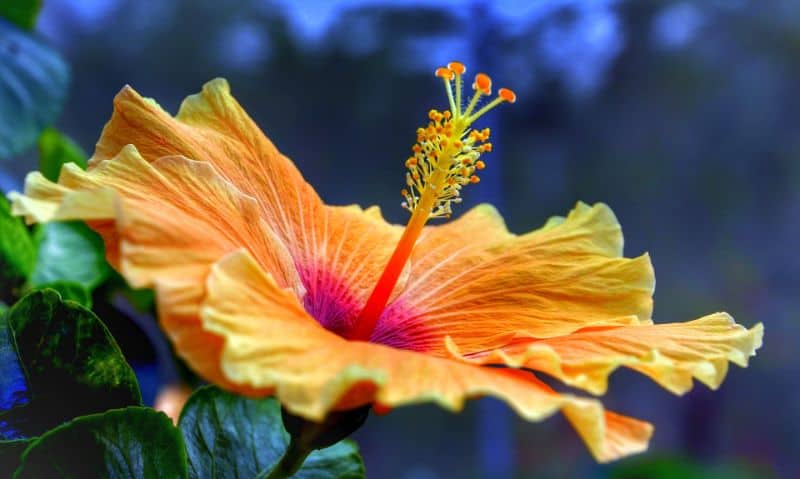
Hibiscus is another marvelous plant to cultivate in Florida during November, particularly the tropical varieties that flourish in this climate. With their large, showy blooms and lush foliage, hibiscus plants can transform any garden space into a tropical paradise. Known for their dramatic flowers that come in numerous colors, hibiscus makes a striking statement in a landscape.
For successful hibiscus growth, select a location that receives full sunlight for at least six hours a day. These plants thrive in rich, well-draining soil and prefer slightly acidic conditions, with a pH around 6.0 to 6.5. Enhancing the soil with organic compost before planting can provide your hibiscus with essential nutrients and moisture retention.
When planting hibiscus, space them at least 3 feet apart to allow for proper airflow and growth. Dig a hole twice the size of the root ball, ensuring the top of the root ball is level with the ground. Water thoroughly after planting and throughout their establishment phase. Once rooted, hibiscus tends to be somewhat drought-tolerant but appreciates regular watering, especially during the blooming season.
Fertilizing with a slow-release fertilizer designed for flowering plants can promote vigorous blooming and enhance the health of your hibiscus. Expect large, vibrant blooms as the plant matures, typically blooming from late spring through fall. In addition to their beauty, hibiscus flowers are also edible and can be used to make herbal teas or as a garnish.
Impatiens
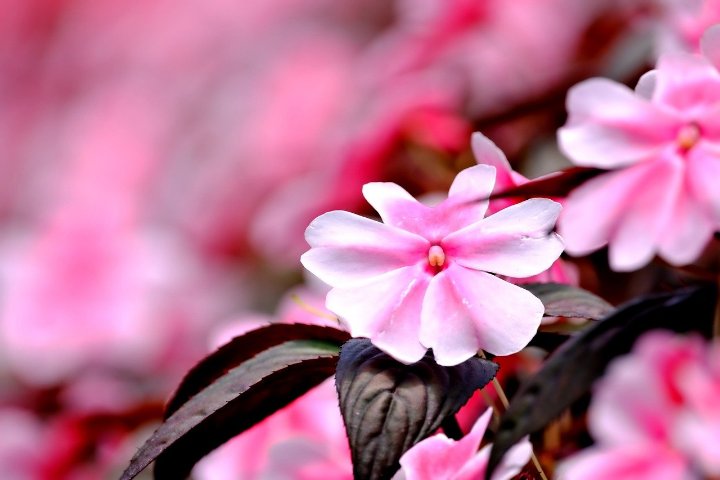
Impatiens are a top pick for gardeners looking to add color to shady areas in Florida in November. These shade-loving plants are known for their prolific blooms, which come in a rainbow of colors, making them ideal for brightening up darker garden corners or for use in containers on patios and porches.
When planning to plant impatiens, look for partial to full shade locations, as they will flourish best with protection from the hot afternoon sun. They adapt well to various soil types, but a rich, well-draining soil with a neutral pH will help them thrive. Prior to planting, mixing in organic compost can improve nutrient levels and drainage.
For planting, space your impatiens about 10 to 12 inches apart to allow for their spreading growth pattern. Dig holes that are deep enough to accommodate the root ball and place the plants at the same depth as in their containers. After planting, water thoroughly and ensure the soil remains consistently moist, especially since impatiens can suffer from drought stress quickly.
Impatiens generally bloom best when deadheaded regularly, encouraging more flowers throughout their growing season, which typically extends from spring through fall. Applying a balanced, water-soluble fertilizer every few weeks can also promote lush foliage and vibrant blooms.
With their ability to fill in gaps in shady gardens and offer continuous color, impatiens are an excellent choice for novice and seasoned gardeners alike. Whether used in groups or mixed with other shade plants, impatiens can create a beautiful tapestry of color that brightens the landscape.
Lantanas
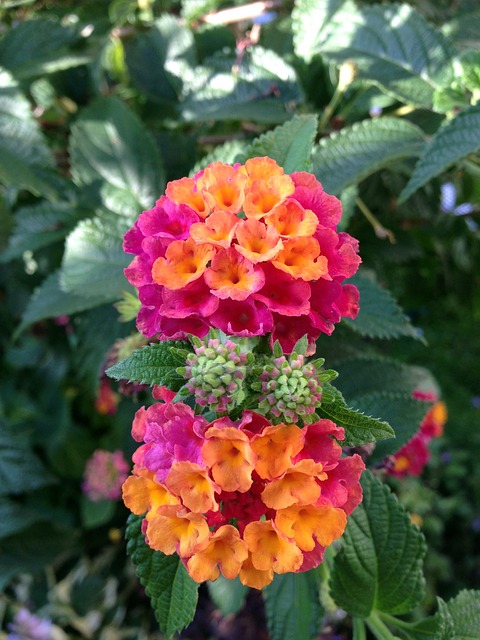
Lantanas are a colorful addition to any Florida garden, known for their heat and drought tolerance, making them ideal for resilient landscape design. These hardy flowering plants produce clusters of small, vibrant flowers that come in various hues, including yellow, orange, red, and purple. Lantanas are not only beautiful but also attract pollinators such as butterflies and hummingbirds, adding life and movement to your garden.
When considering planting in November, choose a spot with full sun, as lantanas thrive in bright, direct light. They prefer well-draining soil but are adaptable to a range of soil types, including sandy soils commonly found in Florida. Before planting, enrich the soil with organic compost to improve nutrient levels and drainage.
When planting lantanas, space them at least 2 to 3 feet apart, as they can spread significantly and benefit from good air circulation. Dig a hole deep enough to accommodate the root ball but not deeper than the plant’s current level in the pot. Water the plants immediately after planting to help establish their roots.
One of the exceptional characteristics of lantanas is their ability to bloom continuously throughout the growing season, providing color from spring until frost. Minimal maintenance is required; simply deadhead spent blooms and prune lightly if the plants become leggy. Lantanas’ vibrant flowers can complement others in mixed borders or stand alone as eye-catching specimens, making them a versatile choice in landscaping.
Pansies

Pansies are a favorite among Florida gardeners in November, as they thrive in cooler conditions and offer cheerful blooms that can revive any garden space. With their captivating variety of colors and unique face-like patterns, pansies can bring delightful charm and elegance to borders, beds, and containers. They are perfect for adding color during the fall and winter months, lasting well into early spring.
To grow pansies successfully, select a location that receives full sun to partial shade—ideally, they should enjoy at least six hours of sunlight each day. Pansies thrive in well-drained, nutrient-rich soil with a pH between 6.0 and 6.8. Before planting, amend the soil with compost to ensure the plants have access to essential nutrients.
When planting, place pansies 6 to 12 inches apart to allow for growth and airflow. Dig holes deep enough to accommodate the root ball while ensuring the top of the root is level with the surrounding soil. After planting, water thoroughly to settle the soil around the roots, and maintain consistent moisture without overwatering.
Pansies can benefit from a balanced fertilizer applied every four to six weeks, promoting lush foliage and abundant blooms. Expect a delightful display of colors ranging from bold blues and yellows to delicate whites and purples. Be sure to remove any faded flowers to encourage new blooms, extending their blooming period.
With their resilience and vibrant hues, pansies are a fantastic choice for brightening up your garden or adding color to outdoor arrangements. These charming flowers are not only visually appealing but can also withstand mild frosts, making them a reliable option throughout the cooler months.
Petunias
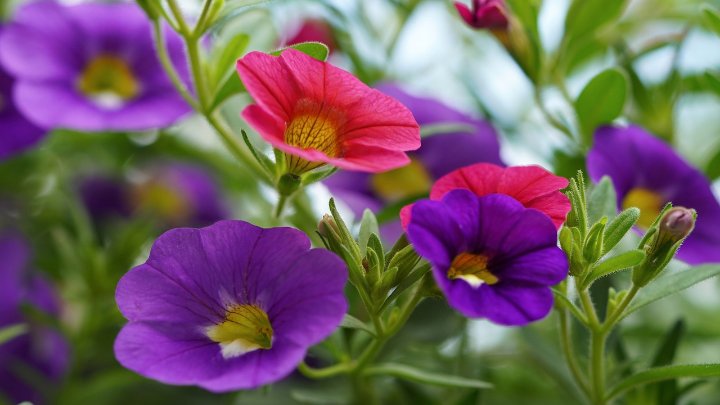
Petunias rank as one of the most popular annual flowers for Florida gardens, offering an array of colors and patterns that can brighten up any landscape. Planting them in November allows for a flourishing display throughout the winter and into the spring. With their delightful fragrance and vibrant blooms, petunias can create a cohesive and lively atmosphere.
When selecting a location for petunias, seek sun-drenched areas, as they bloom best in full sunlight—ideally getting at least six hours of sunlight each day. They prefer well-drained, fertile soil with a slightly acidic to neutral pH (6.0 to 7.0). To prepare the soil, add organic compost or well-rotted manure to boost nutrient content and improve drainage.
For optimal spacing, plant petunias about 12 inches apart to allow adequate air circulation, which helps prevent diseases. Make a hole that matches the depth of the root ball and gently place the plant inside, ensuring the top of the root ball is flush with the soil surface. Thoroughly water the newly planted petunias to settle the soil and encourage root establishment.
Petunias require consistent watering, especially during dry spells, but avoid waterlogged conditions. Applying a balanced fertilizer every few weeks will also support their growth and encourage blooming. Their flowers typically come in a variety of eye-catching colors, including pinks, purples, reds, and whites, often with ruffled or fringed edges.
Roses

Roses are often hailed as the quintessential garden flowers, embodying beauty, elegance, and fragrance. November is a strategic time to plant roses in Florida, as the cooler weather helps them establish robust root systems before the heat of summer arrives. With numerous varieties available, from climbing roses to compact shrub roses, gardeners can select the ones that best match their landscaping needs.
For successful rose cultivation, choose a location that receives at least six hours of sunlight each day. Well-draining soil is crucial, so consider amending clay-heavy soil with organic matter to enhance drainage and nutrient content. A pH level of 6.0 to 6.8 is ideal for healthy rose growth.
When planting roses, dig a hole that is about twice the width of the root ball and deep enough so that the graft union (the swollen area where the rose is grafted onto the rootstock) sits soil-level after planting. Space roses approximately two to three feet apart, depending on the variety, to ensure adequate airflow and prevent disease spread.
After planting, water thoroughly and apply a slow-release fertilizer designed for roses to promote strong growth and vibrant blooms throughout the growing season. Regular deadheading—removing spent flowers—will encourage the plant to produce new blooms, extending the flowering period. Rose varieties typically bloom from spring until the first frost, rewarding gardeners with a glorious display of colors and fragrances that can transform any garden into a scenic retreat.
Snapdragons
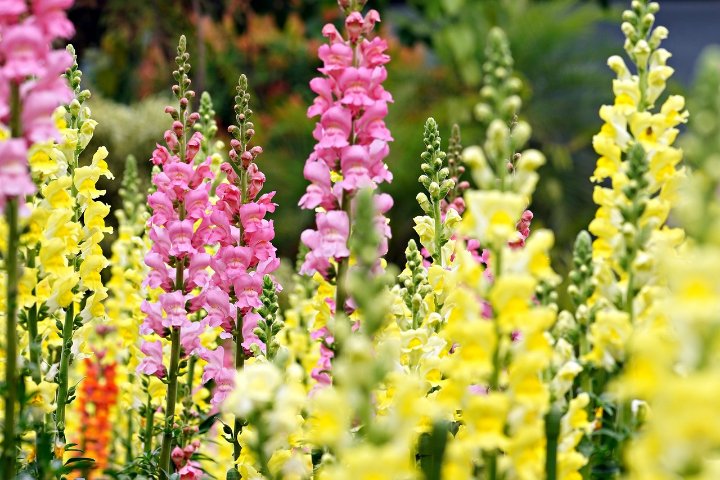
Snapdragons are celebrated for their whimsical, colorful blooms that add vertical interest to gardens. These annual flowers thrive in the cooler months of Florida, making November an ideal time for planting. Their distinctive flower spikes, which resemble a dragon’s mouth that “snaps” open when squeezed, offer quirky and playful beauty, complementing a variety of garden styles.
Select a planting site that enjoys full sun, ideally with at least six hours of sunlight each day. Snapdragons thrive in well-draining soil enriched with organic matter, which helps support their robust growth. A pH range of 6.0 to 7.0 works well for these charming plants.
When planting snapdragons, space them about 6 to 12 inches apart, taking into account the specific variety’s height and spread. Dig holes appropriated for the seedlings, placing each plant at the same soil depth as in its container. Water thoroughly after planting to help the plants settle into their new environment.
Snapdragons generally bloom from late fall through spring, producing a vivid array of shades from pastels to bold reds and purples. Regularly pinching back the spent blooms promotes more flowering and maintains the plant’s overall health. The addition of a balanced granular fertilizer during the growing season will also enhance their growth and flowering capabilities.
These resilient flowers are ideal for creating beautiful borders, adding color to mixed flower beds, or even flourishing in containers where their vertical blooms can reach new heights. Their ability to thrive in cooler winter temperatures makes snapdragons a perfect choice for Florida gardens year-round.
Zinnias

Zinnias are a celebration of color and are a must-have in any Florida garden. Known for their ease of growth and resilience, these annuals are perfect for November planting. They are famous for their abundant blooms that come in a dazzling array of colors, shapes, and sizes, creating a joyful display that attracts butterflies and other pollinators.
To achieve the best results with zinnias, select a location that basks in full sun, as these flowers require at least six to eight hours of sunlight per day. They thrive in well-drained soil rich in organic matter, and a slightly acidic to neutral pH—between 6.0 and 7.0—is optimal for their development.
When planting zinnias, you can either sow seeds directly into the soil or transplant seedlings. If using seeds, plant them about ¼ inch deep and space them 12 to 18 inches apart to allow for proper air circulation and growth. If you’re transplanting, make sure the top of the root ball is level with the soil surface. Water deeply after planting and keep the soil consistently moist until the plants are established.
Zinnias typically awaken to bloom from spring through frost, showcasing their colorful petals and lush foliage. Regular deadheading encourages new flowers and prolongs the blooming season. Unlike many other flowers, zinnias are quite low maintenance, as they require minimal care once established. An occasional application of a balanced liquid fertilizer can foster additional growth and flowering.
Herbs To Plant in November in Florida
Basil

Basil is a quintessential herb known for its aromatic leaves, which are a staple in countless dishes, particularly in Italian cuisine. November is an excellent time to plant basil in Florida since the cooler temperatures allow for robust growth without the stress of summer heat. This tender annual herb thrives in sunny spots and can be grown in garden beds or pots.
Basil prefers well-drained soil enriched with organic matter, allowing it to retain moisture without becoming waterlogged. A slightly acidic to neutral pH (between 6.0 and 7.0) works best for this herb. Before planting, you can amend your soil with compost to provide the necessary nutrients.
When planting basil, ensure you choose a site that receives full sunlight—ideally, at least six hours a day. Space your basil plants about 12 to 18 inches apart to allow them room to grow and promote airflow. Dig holes deep enough to accommodate the root ball and gently place the seedlings in the soil.
Regular watering is crucial for basil, particularly during dry spells; however, be cautious not to overwater. In addition to keeping the soil consistently moist, fertilizing basil with a balanced, water-soluble fertilizer every four to six weeks can boost its growth and flavor.
Basil is incredibly versatile in the kitchen, ideal for pestos, sauces, salads, and garnishes. Regularly harvesting the leaves can help promote bushier growth and prolong the plant’s productive life. This aromatic herb not only adds flavor to your dishes but also serves as an attractive addition to your garden with its lush foliage and delicate white flowers.
Chives

Chives are a fantastic herb to include in your Florida garden during November, offering a mild onion flavor that can elevate many dishes. As a perennial herb, chives are easy to grow and can endure the cooler temperatures approaching winter, making them a valuable addition to the garden.
Choose a location that receives full sun to partial shade, as chives can tolerate some shade while still thriving best in sunlight. They prefer well-draining soil with a neutral pH, ideally around 6.0 to 7.0. For best results, enrich the soil with organic compost before planting.
When planting chives, you can either start from seeds or divide established clumps. If using seeds, sow them about ¼ inch deep and space them 12 to 15 inches apart. If transplanting, dig a hole accommodating the root system, ensuring that the top of the clump sits level with the ground. Water well after planting to settle the soil.
Chives prefer consistent moisture, particularly during dry spells, so regular watering is key to keeping the plants healthy. Unlike many other herbs, chives don’t require much fertilization; however, applying a light feeding of a balanced fertilizer in early spring can encourage growth.
One of the standout features of chives is their edible purple flowers, which are not only visually appealing but can also be used in salads and as garnishes. Regularly harvesting the leaves encourages fresh growth; simply snip the leaves down to a few inches above the ground as needed.
With their delightful taste and ornamental value, chives are perfect for gardens, containers, or even herb windowsills—adding a splash of green and flavor to your cooking throughout the cooler months.
Cilantro

Cilantro, also known as coriander, is a fragrant herb prized for its fresh, citrusy flavor. This annual herb thrives in Florida’s mild November temperatures, making it an ideal choice for gardeners looking to cultivate fresh herbs before the heat returns. Its delicate leaves and seeds (coriander) can enhance various dishes, from salsas to curries.
For optimal growth, plant cilantro in a sunny location that provides at least six hours of sunlight per day. It adapts well to a variety of soil types but prefers loose, well-draining soil with a pH between 6.0 and 6.5. Adding compost before planting can improve soil quality and support healthy growth.
When planting cilantro, you can either start it from seeds or purchase young plants. If using seeds, sow them approximately ½ inch deep and fold them into rows spaced about 12 inches apart. Water gently after planting to encourage germination while ensuring the soil remains consistently moist.
Cilantro benefits from regular watering without becoming overly soggy, which can hinder growth. Fertilization isn’t typically necessary, but a light application of balanced fertilizer can be beneficial if soil fertility is low.
Dill
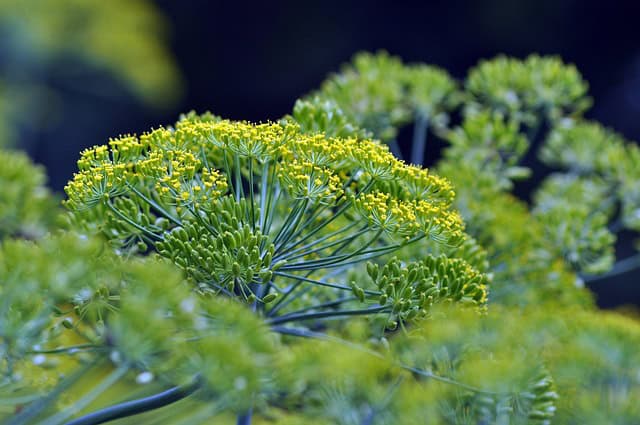
Dill is a lovely annual herb known for its feathery green leaves and aromatic seeds, often used in various dishes, including pickles, salads, and seafood. Planting dill in November allows for robust growth during the cooler months, as this herb is particularly sensitive to heat and prefers the mild weather of late fall and early spring.
For successful dill cultivation, choose a sunny location that receives at least six to eight hours of sunlight daily. Dill prefers well-draining soil that is rich in organic matter. A pH level of around 5.5 to 6.5 is ideal for this herb to thrive. Prior to planting, incorporate compost or well-rotted manure into the soil to enhance its nutrient content.
When sowing dill seeds, plant them about ¼ inch deep and space seeds 12 to 18 inches apart, as dill can grow tall and bushy. After planting, water gently but thoroughly to promote germination. Dill is a slow germinator, so be patient; seeds can take up to two weeks to sprout.
Dill prefers consistent moisture, particularly during dry spells, so check the soil regularly and water as needed. The herb benefits from a light application of balanced fertilizer every four to six weeks, which will support its growth and encourage a lush harvest.
One of the wonderful features of dill is its ability to attract beneficial insects to your garden, such as ladybugs and lacewings, which can help control pests. Regularly clipping the leaves encourages bushier growth. Dill can be enjoyed fresh in salads, soups, and marinades, but be sure to harvest before the plant flowers, as flavor diminishes once plants begin to bolt.
Mint

Mint is a wonderfully versatile herb with a refreshing aroma and flavor that can enhance both sweet and savory dishes. Easy to grow and highly adaptable, planting mint in November allows it to establish roots before the cooler temperatures set in, ensuring plenty of fresh sprigs throughout the winter.
Mint thrives in a location that receives partial to full sun; however, it can tolerate some shade, making it suitable for a variety of planting conditions. It prefers moist, well-draining soil and does best with a pH level between 6.0 and 7.0. Consider enriching the soil with organic compost to improve water retention and nutrient availability.
When planting mint, it is best to do so in containers or dedicated garden beds, as mint can be quite invasive and spread rapidly. If planting in the ground, provide barriers to contain its growth. Space plants approximately 12 to 18 inches apart, digging holes just deep enough to accommodate the root ball.
Mint requires regular watering to maintain its vigor, particularly during dry spells, but be cautious of overwatering. A balanced fertilizer can be applied every four to six weeks during the growing season to encourage lush foliage.
Fresh mint can be used in a multitude of culinary creations, from salads and stir-fries to teas and cocktails. The leaves can also be dried for use in herbal teas or spice blends. Regularly harvesting the leaves not only provides fresh ingredients but also encourages fuller, bushier growth.
In addition to its culinary uses, mint is known to repel pests, making it an excellent companion plant. The delightful fragrance can also improve the atmosphere of your garden, adding a touch of invigorating freshness.
Oregano

Oregano is an essential herb in many cuisines, particularly Mediterranean, known for its robust flavor and aromatic qualities. As a perennial herb, it can be planted in November, allowing it to establish strong roots before the heat of summer returns.
Select a sunny location for oregano, as it requires full sun to thrive—aim for at least six to eight hours of sunlight each day. The plant prefers well-drained soil that is moderately fertile; a pH level between 6.0 and 8.0 is most suitable. Before planting, mixing in compost can help improve soil structure and nutrient levels, enhancing growth.
When planting oregano, dig holes deep enough to accommodate the roots and space the plants about 12 to 18 inches apart to allow for adequate airflow and growth. Depending on your planting method—whether transplanting nursery plants or seeding—plant them at a shallow depth, just deep enough to cover the roots.
Once established, oregano is relatively drought-tolerant, but regular watering is important, particularly during the establishment phase. A light feeding with a balanced fertilizer in early spring can promote vigorous growth and flavor potency.
Parsley

Parsley is a versatile herb commonly used for garnish and flavoring in a wide variety of dishes. Its fresh leaves provide a pop of color and a burst of nutrition, being an excellent source of vitamins A, C, and K. November is a great time to sow parsley in Florida, as its cool-weather tolerance allows for successful germination and growth.
For optimal growth, select a location that enjoys full sun to partial shade; while parsley will thrive in sunlight, it can benefit from some afternoon shade during the warmer months. The herb prefers rich, well-draining soil, ideally with a pH of 6.0 to 7.0. Adding compost before planting can enhance soil fertility and structure.
When planting parsley, either sow seeds directly into the garden or start them indoors for later transplantation. If sowing seeds, plant them about ¼ inch deep, spacing them around 10 to 12 inches apart. Seeds may take two to three weeks to germinate, so patience is key. Water the soil gently to maintain moisture but avoid overly saturated conditions.
Once established, parsley prefers consistent moisture; however, it can withstand short periods of drought. Applying a balanced fertilizer every few weeks during the growing season can support healthy growth and encourage bushy foliage.
Regular harvesting of the leaves will promote fuller growth, and the flavor is best when taken just before the plant flowers. Apart from their culinary uses, parsley leaves can also be dried for seasoning blends or used as a garnish, enhancing the visual appeal of dishes and providing health benefits as well.
Rosemary
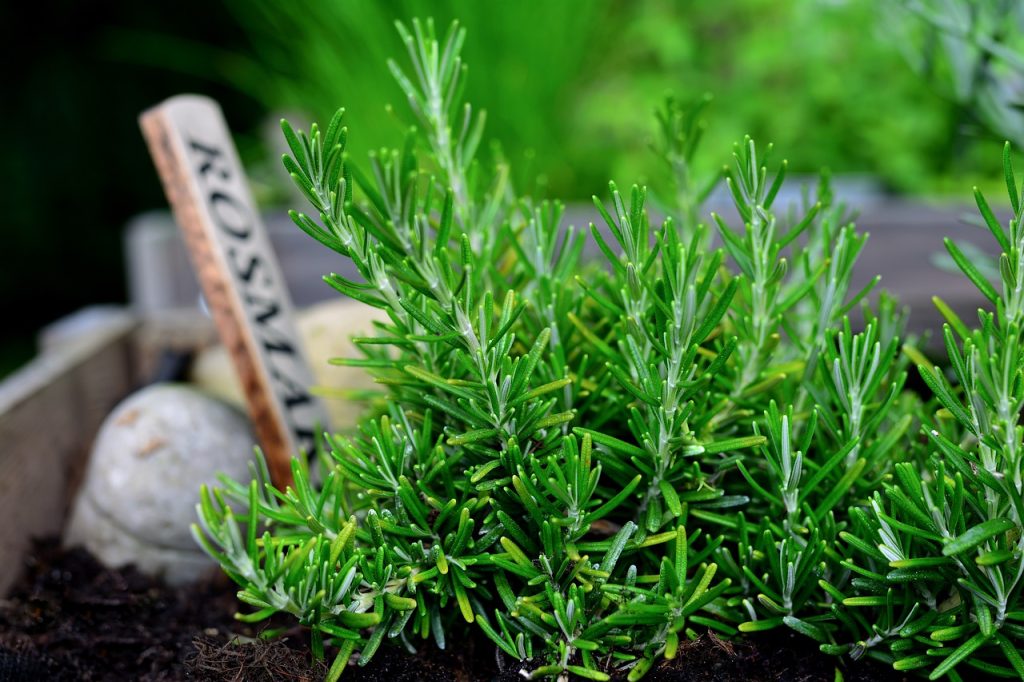
Rosemary is a fragrant perennial herb that lends its robust aroma to a variety of culinary applications, from roasted meats to herbed breads. Planting rosemary in November is beneficial as the milder temperatures allow it to settle in without the stress of extreme heat. With its evergreen nature, rosemary can also provide year-round greenery to your garden.
This herb thrives in full sun, requiring at least six hours of sunlight per day to flourish. Rosemary prefers sandy, well-draining soil with a slightly alkaline pH, ideally between 6.0 and 7.5. Before planting, check your soil’s drainage properties; if necessary, amend it with sand or gravel for improved airflow.
When planting rosemary, space the plants about 12 to 24 inches apart, depending on the variety, as they can grow quite large. Dig a hole sufficient to accommodate the root system and plant it slightly deeper than it was in its nursery pot. Watering should be done moderately, allowing the soil to dry between watering sessions, as rosemary is drought-tolerant and can suffer from root rot if overwatered.
Rosemary does not require frequent fertilization; a light application of balanced fertilizer in the spring is enough to encourage strong growth. Regular pruning is essential not only for harvesting but also to maintain shape and encourage bushier growth. The leaves can be harvested fresh and used in cooking or dried for later use, adding a robust flavor to your culinary creations.
Sage
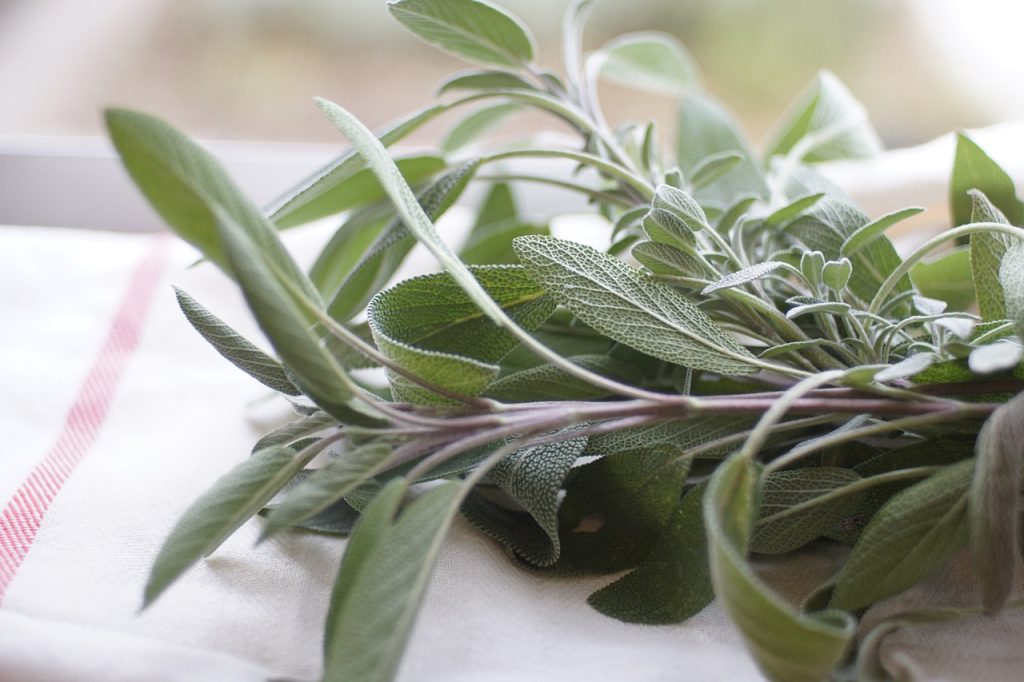
Sage is another perennial herb that flourishes in Florida’s November climate, known for its earthy flavor and aromatic properties. This herb is a staple in many kitchen gardens, often used in poultry dishes, stuffing, and soups. The unique flavor profile of sage can enhance your culinary repertoire while requiring minimal maintenance.
Sage thrives in full sun, making a location that receives at least six hours of sunlight ideal. It prefers well-draining soil with a slightly alkaline to neutral pH, ideally around 6.0 to 7.0. Prior to planting, amending your garden bed with compost can help boost the soil’s nutrient content and enhance drainage.
When planting sage, space the plants about 18 inches apart to allow air circulation and prevent overcrowding. Dig a hole deep enough to accommodate the root ball, and water the plant well after planting to help settle the soil around the roots.
While sage prefers consistently moist soil, it’s essential not to overwater as it is drought-resistant once established. Applying a balanced fertilizer in the early spring can support vigorous growth, especially in the initial stages after planting.
Sage can be harvested by snipping off the outer leaves as needed, encouraging continued growth, and the flavor is best just before flowering. The leaves can be used fresh or dried, and they add depth to a variety of dishes and seasoning blends. This robust herb not only enhances the culinary landscape but also provides an aromatic touch that enriches the overall sensory experience of your garden.
Thyme
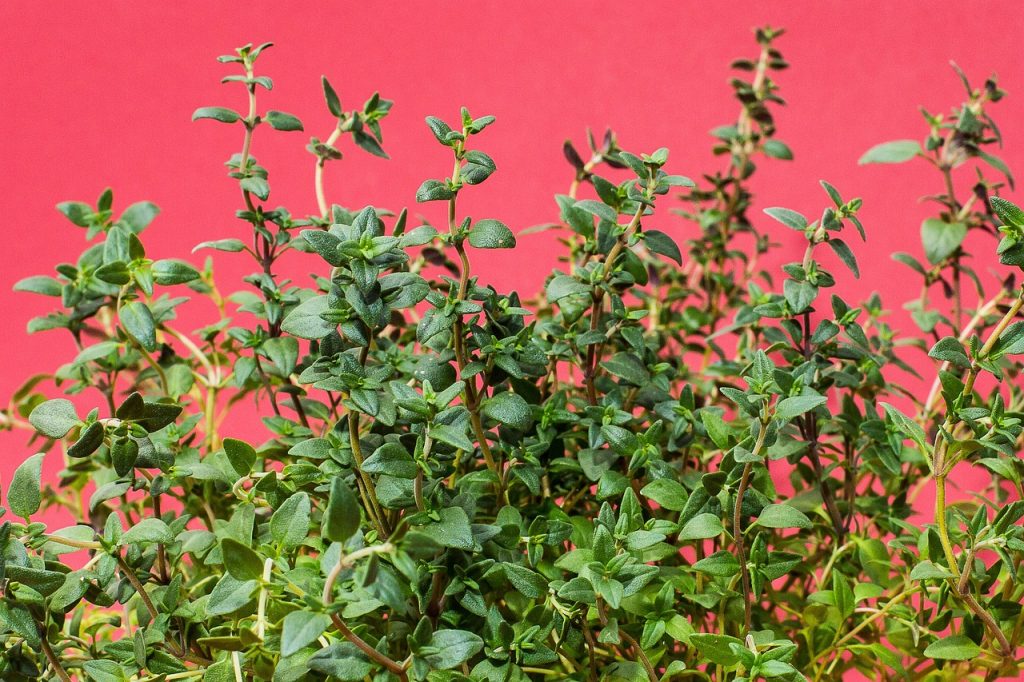
Thyme is a hardy perennial herb known for its aromatic leaves and intricate flavors that enhance numerous dishes. It’s a perfect addition to any Florida garden, especially in November when the weather is kind, allowing these low-growing plants to thrive.
This herb thrives in a sunny location, ideally receiving around six to eight hours of direct sunlight each day. Thyme prefers well-draining, sandy loam soil with a pH level leaning towards the alkaline range, between 6.0 to 8.0. To prepare the soil for thyme, consider mixing in compost or well-rotted manure to improve its nutrient content and drainage capacity.
When it comes to planting thyme, space the plants approximately 12 inches apart to accommodate their growth habits. Thyme can be started from seed or transplanted from a nursery; if starting from seed, sow them just under the surface of the soil, as they require light for germination. Be patient, as thyme seeds can take 2 to 3 weeks to sprout. Water lightly to maintain moisture but avoid creating muddy conditions, as thyme is somewhat drought-tolerant once established.
An additional benefit of thyme is its low maintenance requirement—watering only when the soil is dry and fertilizing once or twice a season is typically enough. Thyme should be pruned regularly to stimulate bushier growth and should be harvested frequently, as this encourages the plant to grow more leaves. The leaves can be used fresh or dried, making them a valuable addition to marinades, sauces, and roasted dishes.
In addition to being a culinary gem, thyme also attracts beneficial pollinators like bees to your garden, which can enhance the overall health of your ecosystem. Its lovely small purple flowers can also add a touch of beauty and charm to your outdoor space, making thyme not only a flavorful but also an aesthetically pleasing herb to grow.
FAQ
What vegetables can I plant in Florida in November?
In November, Florida gardeners can sow a variety of cool-season vegetables such as lettuce, kale, spinach, radishes, carrots, and turnips. The cooler temperatures allow these crops to grow well without the stress of summer heat.
Can I start my herb garden in November in Florida?
Absolutely! November is an excellent time to start planting various herbs in Florida, including basil, cilantro, dill, mint, parsley, rosemary, sage, and thyme. The handsomely mild temperatures encourage healthy growth and establishment.
How should I prepare my soil for planting in November?
Before planting, ensure that your soil is well-draining and rich in organic matter. Test the pH of your soil to determine if it is suitable for the plants you intend to grow. Adding compost or well-rotted manure can improve soil fertility and structure. Additionally, tilling the soil to aerate it before planting will help prepare it not just for easy planting but also for healthy root growth.
How much water do I need to provide for newly planted herbs?
After planting, herbs typically need consistent moisture to establish their roots. However, overwatering can lead to root rot. It’s best to water when the top inch of the soil feels dry. Once the herbs are established, many, like rosemary and thyme, are drought-tolerant and will require less frequent watering.
Are there any pests I should be aware of when growing herbs in Florida?
Florida has its share of pests, including aphids, spider mites, and whiteflies, which can affect herbs. Regular monitoring of your plants, combined with organic pest control methods such as neem oil or insecticidal soap, can help manage these pests effectively. Additionally, encouraging beneficial insects like ladybugs can aid in natural pest control.
Can I grow herbs in containers during November?
Yes! Many herbs, including basil, parsley, mint, and rosemary, do very well in containers. Just make sure your pots have adequate drainage holes, and use a potting mix designed for herb gardening. Containers can be moved to provide optimum sunlight and protection from cold weather.
In summary, November presents an incredible opportunity for Florida gardeners to enhance their outdoor spaces with a variety of nourishing herbs and vegetables. With proper planning, attention to soil health, and ongoing maintenance, your garden can flourish and provide a wealth of flavor and beauty to your home. Happy planting!





